|
|
|
 Richard Moore, BD DiagnosticsROCKVILLE AND BALTIMORE, MARYLAND, August 26, 2013 – BioHealth Innovation, Inc. (BHI), a regional private-public partnership focusing on commercializing market-relevant biohealth innovations and increasing access to early-stage funding in Central Maryland, announced today its selection of Richard Moore, M.D., Ph.D., as a new Entrepreneur-in-Residence (EIR) at the National Institutes of Health (NIH) Office of Technology Transfer (OTT). BHI and BD established this position in July 2013. Dr. Moore, an executive with decades of experience in diagnostics development and technology strategy, will help support the development of new start-up companies and product commercialization based upon innovative technologies selected via OTT license agreements. Richard Moore, BD DiagnosticsROCKVILLE AND BALTIMORE, MARYLAND, August 26, 2013 – BioHealth Innovation, Inc. (BHI), a regional private-public partnership focusing on commercializing market-relevant biohealth innovations and increasing access to early-stage funding in Central Maryland, announced today its selection of Richard Moore, M.D., Ph.D., as a new Entrepreneur-in-Residence (EIR) at the National Institutes of Health (NIH) Office of Technology Transfer (OTT). BHI and BD established this position in July 2013. Dr. Moore, an executive with decades of experience in diagnostics development and technology strategy, will help support the development of new start-up companies and product commercialization based upon innovative technologies selected via OTT license agreements.
back to top 
AstraZeneca today announced that MedImmune, its global biologics research and development arm, has entered into a definitive agreement to acquire Amplimmune, a privately-held, Maryland, US-based biologics company focused on developing novel therapeutics in cancer immunology.
back to top 

Montgomery County Executive Isiah Leggett will visit China next month, leading a delegation of business and civic leaders looking for partnership opportunities in areas such as education and biotechnology.
While final details are still being worked out, Leggett’s group is scheduled to visit Beijing, Shanghai, Benxi and Xi’an, the county’s newest “sister city.” The trip, set for Sept. 15-25, has been jointly organized by the county, the Maryland China Business Council and the state of Maryland’s trade and investment office in Shanghai, which will help with roundtables and other contacts.
back to top 

ATCC, the premier global biological materials resource and standards organization, announces material deposit agreements with over 30 leading public and private institutions. These institutions will have the option to participate in the new Biomaterial Contributor Network (BCN), and make important research materials available to the research community. ATCC will coordinate with Technology Transfer Offices at each institution to create a simple, streamlined process for adding new microbial strains and cell lines to the ATCC collection. Many of the participants will have an opportunity to receive a share of the revenue from the sale and licensing of materials developed at their institutions. Over 225 unique biological materials are deposited under these agreements to date, with most available to both contributors and others as determined jointly by ATCC and the institution.
“Since 1925, ATCC has set the standard for providing the largest and most diverse collection of authenticated biological materials to the scientific community. The Network enables Contributors to create a lasting impact on science around the globe,” said Dr. Raymond Cypess, CEO of ATCC. “These agreements reinforce ATCC’s Mission to distribute scientifically valuable, authenticated materials, while recognizing the shared financial benefit with participating institutions,” said Matt Klusas, Senior Director of Corporate Development at ATCC.
back to top 
 Ten of Maryland’s nineteen fastest-growing companies are located in Montgomery County – including the state’s highest-ranking company and two of our incubator companies! Ten is also two more than made the list from well-publicized, regional rival Fairfax County, Virginia – supporting what local businesses and economic development professionals have known for years: Montgomery County is a GREAT place to grow a business. Ten of Maryland’s nineteen fastest-growing companies are located in Montgomery County – including the state’s highest-ranking company and two of our incubator companies! Ten is also two more than made the list from well-publicized, regional rival Fairfax County, Virginia – supporting what local businesses and economic development professionals have known for years: Montgomery County is a GREAT place to grow a business.
back to top 

Howard County has plans for a new incubator that would aim to develop companies with a socially conscious focus.
The Conscious Venture Lab is a partnership between Howard County and New York-based The Porter Group LLC. The incubator, which will be housed in the county’s Maryland Center for Entrepreneurship, could begin enrolling entrepreneurs and budding startups as early as this fall.
back to top 

AstraZeneca Plc took a further step to bolster its pipeline of new cancer drugs on Monday by agreeing to acquire privately held U.S. biotech company Amplimmune for up to $500 million.
The deal is the second within 24 hours in the cancer drug space, following Amgen Inc’s much larger acquisition of Onyx Pharmaceuticals Inc for about $10.4 billion.
Amplimmune specialises in developing treatments designed to help the immune system fight cancer and the purchase will give AstraZeneca access to a number of compounds currently in pre-clinical development.
back to top 
 BioMaryland is supporting various events in France which benefit the biohealth community. See if your company qualifies for a travel assistance grant to fly out and attend! BioMaryland is supporting various events in France which benefit the biohealth community. See if your company qualifies for a travel assistance grant to fly out and attend!
back to top 

A team of researchers led by Andrew Coop, PhD, professor and chair of the Department of Pharmaceutical Sciences (PSC) at the University of Maryland School of Pharmacy (UMSOP), has developed a new opioid drug that shows great potential to advance treatment and improve quality of life for individuals living with chronic pain. Spotlighted in a recent issue of ACS Chemical Neuroscience, the compound, known as UMB 425, is as strong as morphine, but displays diminished tolerance over time with no obvious toxic effects.
“UMB 425 is a breakthrough in the development of therapeutics to treat chronic pain,” says Coop (on the left in the photo). “Unlike other drugs developed to act on only one biological target, UMB 425 acts on two different opioid receptors in the body. When activated at the same time, these receptors work together to provide pain relief and slow the body’s development of tolerance to the drug. This diminished tolerance allows a lower dose of the opioid to be administered for a longer time period, while still achieving the same level of pain relief.”
back to top 

BD Diagnostics, a segment of BD (Becton, Dickinson and Company) (NYSE: BDX), a leading global medical technology company, announced today the U.S. Food and Drug Administration clearance and launch of the BD ProbeTec™ Trichomonas vaginalis Qx Amplified DNA Assay for the direct qualitative detection of T. vaginalis DNA in endocervical and vaginal samples as well as neat urine specimens to aid in the diagnosis of trichomoniasis on the BD Viper™ System with XTR™ Technology. This assay has been CE-marked to the In Vitro Diagnostic Directive (98/79/EC).
Trichomoniasis is the most common curable sexually transmitted infection (STI). Worldwide, more than 180 million cases are estimated to occur annually.[i] Genital inflammation caused by trichomoniasis can increase a woman’s susceptibility to HIV infection. In HIV-infected women, trichomoniasis may increase the likelihood of HIV transmission to sex partners. Furthermore, trichomoniasis is often asymptomatic. For these reasons, experts recommend screening for T. vaginalis in women considered to be at high risk for infection (i.e., women who have new or multiple partners, have a history of STIs, exchange sex for payment, or use injection drugs).
back to top 

One of the first tenants to lease at Emerging Technology Center’s new Highlandtown location is SameGrain, developer of a social discovery platform that helps people anonymously locate, connect with, and grow new friendships with people who share similar demographics, beliefs, and interests.
One of SameGrain’s goals is making it easier for people who share common interests to find each other, says SameGrain co-founder Anne A. Balduzzi.
back to top 

Johns Hopkins researchers say they have found a specific protein in nearly 100 percent of high-grade meningiomas — the most common form of brain tumor — suggesting a new target for therapies for a cancer that does not respond to current chemotherapy.
Importantly, the investigators say, the protein — NY-ESO-1 — is already at the center of a clinical trial underway at the National Cancer Institute. That trial is designed to activate the immune systems of patients with other types of tumors that express the protein, training the body to attack the cancer and eradicate it.
back to top 

Forum Agenda: 7:30 a.m. – 5 p.m.
Jones Day Terrace & Conference Center
51 Louisiana Ave, NW | Washington, D.C.
With the increasing adoption of cloud computing, mobile devices and web-based applications, hackers have more opportunities than ever to infiltrate and crash network systems, especially in healthcare, which is increasingly becoming more vulnerable. The two greatest areas of opportunity for investment capital and the start-up community is in healthcare and cyber security. The nexus of these two sectors provides an even greater and more focused set of opportunities for investment. The Angel Venture Forum brings together all star roundtables of experts to opine and discuss the topics and the opportunities herein.
back to top 

NIH announces the availability of a Niche Assessment Program for its SBIR/STTR Phase I awardees funded in fiscal years (FY) 2013 and 2014. All active NIH SBIR/STTR Phase I awardees (by grant or contract) as well as those small businesses selected to receive a Phase I award in the first three months of the upcoming fiscal year will be eligible to participate. This program can help “jump-start” a company’s commercialization efforts by providing the market insight and data that can be used to strategically position its technology in the marketplace, by assisting companies with their development of commercialization plans for Phase II applications, and by introducing small businesses to potential partners.
A third party, unbiased assessment of appropriate market niches for products/services that are being developed by NIH’s SBIR/STTR Phase I awardees will be performed by Foresight Science & Technology. Using its Technology Niche Analysis® (TNA®), Foresight will perform the due diligence on markets appropriate for each SBIR technology and develop an in-depth report for each SBIR/STTR awardee that addresses:
- needs and concerns of end-users
- competing technologies and competing products
- competitive advantage of the SBIR/STTR-developed technology
- market size and potential market share (may include national and/or global markets)
- barriers to market entry (may include, but is not limited to pricing, competition, government
- regulations, manufacturing challenges, capital requirements, etc.)
- market drivers
- status of market and industry trends
- potential customers, licensees, investors, or other commercialization partners
- price customers are likely to pay
back to top 

Electronic medical records. DNA sequencing. Big data. These technology trends are changing the way medicine is practiced today — but what’s coming next? I scoured the web, reached out to futurists and drew from past conversations with industry leaders to compile a list of the next generation of disruptive technologies that are on the brink of breaking through in healthcare. What’s missing from this list?
back to top 

Novartis International AG / Novartis holds annual healthcare entrepreneur competition to generate insight into healthcare and innovation of tomorrow . Processed and transmitted by Thomson Reuters ONE. The issuer is solely responsible for the content of this announcement.
- The International Biotechnology Leadership Camp (BioCamp) fosters idea exchange with leading scientists as well as entrepreneurship for young talents
- 60 selected students from leading international universities attend to explore science and innovation at Novartis headquarters in Basel, Switzerland
- Novartis CEO presents innovative health care solutions and business approaches to address the evolving need to improve patient outcomes
back to top 
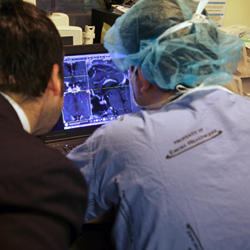
A new system for visualizing the brain during surgery is helping neurosurgeons more accurately diagnose and treat patients and is even allowing them to perform some procedures that until now have been extremely difficult or even impossible.
Neurosurgeons can use the imaging technology during surgeries that require small objects—biopsy needles, implants, or tubes to deliver drugs—to be placed at precise locations in the brain. The system provides live magnetic resonance images (MRI) that allow surgeons to monitor their progress during the operation.
back to top 
 This summer marked the inauguration of the DreamIt Health accelerator, a startup boot camp focused on healthcare IT run by DreamIt Ventures and powered by Penn Medicine and Independence Blue Cross. In four short months, ten extraordinary teams of entrepreneurs, including four from Wharton, were brought together from around the country to achieve significant milestones going from concepts to prototypes, products, pilots and revenues. As the program wound down, the investor, startup and healthcare community turned out in force for Demo Day to see a snapshot of each company’s progress and plans for the future. This summer marked the inauguration of the DreamIt Health accelerator, a startup boot camp focused on healthcare IT run by DreamIt Ventures and powered by Penn Medicine and Independence Blue Cross. In four short months, ten extraordinary teams of entrepreneurs, including four from Wharton, were brought together from around the country to achieve significant milestones going from concepts to prototypes, products, pilots and revenues. As the program wound down, the investor, startup and healthcare community turned out in force for Demo Day to see a snapshot of each company’s progress and plans for the future.
back to top 
|
|
|



|
In This Issue
|
|
About BHI
BioHealth Innovation (BHI) is a regionally-oriented, private-public partnership functioning as an innovation intermediary focused on commercializing market-relevant biohealth innovations and increasing access to early-stage funding in Maryland.
|
|
|
|

September 9-10
Boston Park Plaza Hotel & Towers

September 9-27

September 11
William E. Hanna Jr. Innovation Center at Shady Grove

September 12
Novartis Institutes for Biomedical Research

September 18-19
South San Francisco near the Airport
|
BioHealth Job Opportunities
|
Newsletter designed and distributed by:

|
|
|
 |
|
The information contained in this website and newsletters is for general information purposes only. The information is provided by BioHealth Innovation via its newsletters, but not written or endorsed in any way by BioHealth Innovation unless otherwise noted. While we endeavor to keep the information up to date and correct, we make no representations or warranties of any kind, express or implied, about the completeness, accuracy, reliability, suitability or availability with respect to the website or the information, products, services, or related graphics contained on the website for any purpose. Any reliance you place on such information is therefore strictly at your own risk.
|
|
|
|
|
|
|
 Richard Moore, BD DiagnosticsROCKVILLE AND BALTIMORE, MARYLAND, August 26, 2013 – BioHealth Innovation, Inc. (BHI), a regional private-public partnership focusing on commercializing market-relevant biohealth innovations and increasing access to early-stage funding in Central Maryland, announced today its selection of Richard Moore, M.D., Ph.D., as a new Entrepreneur-in-Residence (EIR) at the National Institutes of Health (NIH) Office of Technology Transfer (OTT). BHI and BD established this position in July 2013. Dr. Moore, an executive with decades of experience in diagnostics development and technology strategy, will help support the development of new start-up companies and product commercialization based upon innovative technologies selected via OTT license agreements. Richard Moore, BD DiagnosticsROCKVILLE AND BALTIMORE, MARYLAND, August 26, 2013 – BioHealth Innovation, Inc. (BHI), a regional private-public partnership focusing on commercializing market-relevant biohealth innovations and increasing access to early-stage funding in Central Maryland, announced today its selection of Richard Moore, M.D., Ph.D., as a new Entrepreneur-in-Residence (EIR) at the National Institutes of Health (NIH) Office of Technology Transfer (OTT). BHI and BD established this position in July 2013. Dr. Moore, an executive with decades of experience in diagnostics development and technology strategy, will help support the development of new start-up companies and product commercialization based upon innovative technologies selected via OTT license agreements.
back to top 
AstraZeneca today announced that MedImmune, its global biologics research and development arm, has entered into a definitive agreement to acquire Amplimmune, a privately-held, Maryland, US-based biologics company focused on developing novel therapeutics in cancer immunology.
back to top 
 On Wednesday August 21st, 80+ people filled the BHI parking lot for an evening of networking, eating crabs, and enjoying a relaxed, stress-free atmosphere. Represented was a who’s who of the Montgomery County biohealth community and the local county government. On Wednesday August 21st, 80+ people filled the BHI parking lot for an evening of networking, eating crabs, and enjoying a relaxed, stress-free atmosphere. Represented was a who’s who of the Montgomery County biohealth community and the local county government.
Thank you to everyone who made it out and we hope to see you again next time!
back to top 
 This summer marked the inauguration of the DreamIt Health accelerator, a startup boot camp focused on healthcare IT run by DreamIt Ventures and powered by Penn Medicine and Independence Blue Cross. In four short months, ten extraordinary teams of entrepreneurs, including four from Wharton, were brought together from around the country to achieve significant milestones going from concepts to prototypes, products, pilots and revenues. As the program wound down, the investor, startup and healthcare community turned out in force for Demo Day to see a snapshot of each company’s progress and plans for the future. This summer marked the inauguration of the DreamIt Health accelerator, a startup boot camp focused on healthcare IT run by DreamIt Ventures and powered by Penn Medicine and Independence Blue Cross. In four short months, ten extraordinary teams of entrepreneurs, including four from Wharton, were brought together from around the country to achieve significant milestones going from concepts to prototypes, products, pilots and revenues. As the program wound down, the investor, startup and healthcare community turned out in force for Demo Day to see a snapshot of each company’s progress and plans for the future.
back to top 

Renee M. Winsky, a Maryland business executive with broad experience leading organizations, was named Leadership Maryland’s president and CEO.
She will replace Nancy Minieri, who founded the organization in 1992 and announced in March that she will retire at the end of this year.
back to top 

You sit down to a family dinner with aunts, your grandmother, three second cousins once removed, a floating niece, maybe a family dog. You’ve got great news: You’ve been accepted to Johns Hopkins University, a school that people who don’t live in the mid-Atlantic region know about, a school foreigners desperately want to get into. It’s ranked 13th in the world by the most recent U.S. News and World Report, for God’s sake; it’s definitely time to celebrate.
Your whole family remembers hearing Hopkins’ name in that Prince and Me movie with Julia Stiles, where she wanted to be a doctor instead of just marrying a prince and being rich and stuff. I guess that’s kind of what Hopkins is about, the whole getting educated and doing things instead of marrying a rich dude thing (though, who knows, there are a lot of future engineers/doctors around).
back to top 

GlaxoSmithKline plc, a research-based pharmaceutical company, recently announced the U.S. Food and Drug Administration’s approval of GSK’s FluLaval Quadrivalent influenza virus vaccine for individuals three years of age and older.
The vaccine is the second GSK intramuscular quadrivalent influenza vaccine approved by the FDA, following the approval in December of GSK’s Fluarix Quadrivalent. FluLaval Quadrivalent protects against two influenza A strains and two influenza B strains. Previous vaccines only included three strains to protect against two A virus strains and one B strain.
back to top 

Howard County is teaming up with Johns Hopkins University to launch a new accelerator geared toward commercial technology.
The new accelerator, called the Accelerator for the Commercialization of Technology, will help bring to market technology developed at the massive Hopkins Applied Physics Laboratory in Laurel. Howard County Executive Ken Ulman plans to formally announce the new partnership between the laboratory and the Howard County Economic Development Authority at an event Thursday.
back to top 

The Office of Technology Transfer (OTT), Office of the Director (OD), the National Institutes of Health (NIH), invites industry organizations (including corporations, partnerships, limited partnerships, and industrial development organizations); public and private foundations and nonprofit organizations to solicit research proposals from scientists across the NIH Intramural Research Program (IRP) for multiple focused research projects under a the NIH Cooperative Research And Development Agreement (CRADA) Program. This CRADA Program is an extension of collaboration opportunities solicited by NIH or developed on a one-on-one basis. As such, it is consistent with PHS Technology Transfer policy and the public health mission of the NIH. These collaboration opportunities are structured under the authority of 15 U.S.C. 3710a—Cooperative Research and Development Agreements. Note that the CRADA mechanism does not permit the transfer of funds from the NIH to a collaborator but does permit the collaborator to provide funding to the NIH researcher.
back to top 
by Brian Darmody
 The Chronicle of Higher Education reported release of the 2013 Academic Ranking of World Universities (ARWU) and it has good news for Maryland. The ARWU in the past decade has presented the Top 500 universities in the world ranked on quality of scientific papers and other methodologies to evaluate institutions of higher education. The Chronicle of Higher Education reported release of the 2013 Academic Ranking of World Universities (ARWU) and it has good news for Maryland. The ARWU in the past decade has presented the Top 500 universities in the world ranked on quality of scientific papers and other methodologies to evaluate institutions of higher education.
Harvard was ranked #1, but Johns Hopkins University was ranked number 17 in the world (#15 in US) and University of Maryland College Park was ranked number 38 in the world (#29 in US).
Having two highly ranked research universities in the relatively small state of Maryland, adjacent to our Nation’s Capital, is testament to the long term vision of our elected and university leaders in supporting research and higher education.
Many countries are working on strategies to have their universities enter the top 100 list. Maryland is fortunate to already be there, and we need to continue to build robust federal/university/corporate partnerships to continue and grow our state’s higher education research ecosystem.
ARWU Rankings: http://www.shanghairanking.com/Academic-Ranking-of-World-Universities-2013-Press-Release.html
back to top 
 Washington: A group of researchers have made a significant breakthrough for figuring out which mutations are benign and which are deleterious in cystic fibrosis. Washington: A group of researchers have made a significant breakthrough for figuring out which mutations are benign and which are deleterious in cystic fibrosis.
back to top 
 BioMaryland is supporting various events in France which benefit the biohealth community. See if your company qualifies for a travel assistance grant to fly out and attend! BioMaryland is supporting various events in France which benefit the biohealth community. See if your company qualifies for a travel assistance grant to fly out and attend!
back to top 

Biomedical engineers from The Johns Hopkins University have partnered with clinicians to create new therapeutic eye injections for a type of central vision loss caused by blood vessel growth at the back of the eye.
The new drug, with a biodegradable time-release coating is currently being tested to evaluate effectiveness in stopping such growth in mice.
back to top 

Investigators discuss new findings in Biomedicine and Biomedical Engineering. According to news reporting out of Baltimore, Maryland, by NewsRx editors, research stated, “Case reports document successful use of a high-density polytetrafluorethylene membrane to augment horizontal defects associated with immediately placed implants.”
Our news journalists obtained a quote from the research from the University of Maryland, “This membrane, which is designed to withstand exposure (not require primary closure) to the oral cavity because it is impervious to bacteria, reduces the need for advanced flap management to attain primary closure. Thus, the surgical aspect is less complex and the mucogingival architecture of the area can be maintained.”
back to top 

Hospital executives have never been frivolous when it comes to investing in technology, but as reimbursements shrink, the need to carefully analyze each purchasing decision has never been more urgent.
Given all the worthwhile – and not so worthwhile – options, what choices are hospital administrators currently making?
Since IT spending is largely taken up by meeting meaningful use and ICD-10 requirements, said Chantal Worzala, director of policy at the American Hospital Association, hospitals don’t have much left over for investments in other things.
back to top 
 Take Care Team Connect, an Evanston, Ill.-based IT firm that provides software platforms for population healthcare management while also offering provider coaching services on how to manage population-based workflows effectively. Take Care Team Connect, an Evanston, Ill.-based IT firm that provides software platforms for population healthcare management while also offering provider coaching services on how to manage population-based workflows effectively.
back to top 

Punit Dhillon built his career arranging Canadian venture capital funding for life sciences research and running companies that performed clinical trials in Canada.
Yet when he co-founded a company to develop cancer treatments two years ago, the president and chief executive officer of San Diego-based OncoSec Medical Inc. found he had no option but to operate solely in the United States.
back to top 

American healthcare workers’ confidence levels remained fairly consistent in the second quarter of 2013, according to the Q2 Randstad Healthcare Employee Confidence Index. Confidence levels among healthcare workers decreased by one-fifth of a point, to 54.3, in the second quarter of 2013.
Harris Interactive conducted the online survey o behalf of Randstad Healthcare in April, May and June of this year, among 188 healthcare workers, ages 18 and older. It included physicians, healthcare administrators, healthcare IT professionals and other healthcare professionals.
back to top 

What if we could increase productivity and stave the capital flight by helping Life Sciences startups build their companies more efficiently?
We’re going to test this hypothesis by teaching a Lean LaunchPad class for Life Sciences and Health Care (therapeutics, diagnostics, devices and digital health) this October at UCSF with a team of veteran venture capitalists.
back to top 
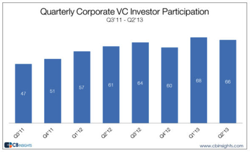
Corporate venture capital may be what fills in the large gaps VC has left behind, with CVC deals about 60 percent larger than VC deals on the whole.Healthcare corporate venture capital deals are up nearly 40 percent compared to Q1 and funding is up 34 percent, according to a report from CB Insights.
There were 126 CVC deals in Q2, ringing in at a combined value of $1.7 billion. Of these deals, 40 percent were at Seed or Series A-level, meaning CVCs may be willing to take risks VCs aren’t any more. According to the report, CVCs may help companies escape the Series A crunch: “One of every 4 CVC deals in Q2’13 were Series A deals ’ this represented an 800 basis point increase in Series A deal share vs. Q2’12.”
back to top 
|
|
|



|
In This Issue
|
|
About BHI
BioHealth Innovation (BHI) is a regionally-oriented, private-public partnership functioning as an innovation intermediary focused on commercializing market-relevant biohealth innovations and increasing access to early-stage funding in Maryland.
|
|
|
|

September 9-10
Boston Park Plaza Hotel & Towers

September 9-27

September 11
William E. Hanna Jr. Innovation Center at Shady Grove

September 12
Novartis Institutes for Biomedical Research

September 18-19
South San Francisco near the Airport
|
BioHealth Job Opportunities
|
Newsletter designed and distributed by:

|
|
|
 |
|
The information contained in this website and newsletters is for general information purposes only. The information is provided by BioHealth Innovation via its newsletters, but not written or endorsed in any way by BioHealth Innovation unless otherwise noted. While we endeavor to keep the information up to date and correct, we make no representations or warranties of any kind, express or implied, about the completeness, accuracy, reliability, suitability or availability with respect to the website or the information, products, services, or related graphics contained on the website for any purpose. Any reliance you place on such information is therefore strictly at your own risk.
|
|
|
|
|
|
|
 Do you want to help change the face of the Maryland Biohealth Community? Are you an experienced entrepreneur itching to work with disruptive technologies and innovative individuals to push them towards being the next big startup? Do you want to help change the face of the Maryland Biohealth Community? Are you an experienced entrepreneur itching to work with disruptive technologies and innovative individuals to push them towards being the next big startup?
BioHealth Innovation, Maryland’s youngest innovation intermediary wants to put you in the right place to make this happen. We need an experienced individual to to lead our Health IT initiative as our Health IT Entrepreneur-in-Residence (EIR).
back to top 
 Through a career spanning three decades and counting, Douglas Liu has managed various operations for life sciences companies in Boston, Chicago, Europe and Montgomery County. He has been involved with numerous organizations in the field, including the Tech Council of Maryland and the Governor’s International Advisory Council. Through a career spanning three decades and counting, Douglas Liu has managed various operations for life sciences companies in Boston, Chicago, Europe and Montgomery County. He has been involved with numerous organizations in the field, including the Tech Council of Maryland and the Governor’s International Advisory Council.
Such wide experience is a key reason he was recently chosen as board chairman of BioHealth Innovation, a Rockville-based public-private nonprofit that helps commercialize innovative ideas in the field and expand those companies. The partnership formed about two years ago after it was among the recommendations of the Montgomery County Biosciences Task Force.
back to top 

While scientists have struggled for decades to produce an effective malaria vaccine, Rockville-based biotech company Sanaria is encouraged enough by clinical trials that it hopes to have its malaria vaccine on the market in three to five years, The Gazette reports.
The results of a Phase I clinical trial of the vaccine—published Thursday in the online issue of Science magazine—show that the vaccine provided complete protection against malaria in subjects who were exposed to malaria parasites, according to a news release from Sanaria.
back to top 

Rockville-based Emergent BioSolutions Inc. on Friday announced the appointment of Barry Labinger, a well-known former executive at Human Genome Sciences Inc., to head its biosciences division.
Labinger served as HGS’ chief commercial officer from 2005 until last year, when GlaxoSmithKline plc snapped up the Rockville drug-maker for $3.6 billion. Glaxo made a clean sweep of Human Genome executives, including CEO Tom Watkins, shortly after.
back to top 
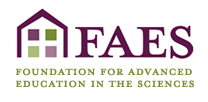
Through the Advanced Studies in Technology Transfer program, students will simultaneously gain the necessary knowledge and build professional networks with respected practitioners of the field. Our objective is to serve not only the needs of scientists and engineers who wish to pursue this non-traditional career, but also those of professionals who seek additional training.
View available courses in the Advanced Studies in Technology Transfer program.
More Information
The relatively new field of Technology Transfer can trace its origins and rapid growth to the economic developments and legislation of the early 1980s, a time when the US was looking to enhance its global competitiveness. While countries like Germany and Japan were exceptionally good at translating the ideas that originated from academic labs into useful products, US academic research results were by and large relegated to mere publications in scholarly journals. Concerned about the non-use of this potential goldmine of ideas, the US lawmakers passed a series of legislation in the early 1980s culminating in the famous Bayh-Dole Act. This Act has shifted the onus of commercialization from a central granting agency to the numerous grantees that receive the research funds, and the grantees have taken very enthusiastically to this shift. The Economist has lauded this Bill as the most inspired piece of legislation in the last half century.
back to top 

Thursday, August 22, 2013 10:00 am
This webinar, hosted by GUIRR, will present a new resource, the Federal Laboratory Consortium (FLC) Available Technologies tool. The tool provides a free, one-stop shop to locate licensing opportunities for a particular technology anywhere within the FLC’s nationwide system of federal labs and research centers. Fully equipped with Google’s advanced search capabilities, the FLC Available Technologies tool yields user-friendly results that can be saved, printed, or downloaded as a PDF with active hyperlinks that directly link to the featured technology.
Industry and academic representatives who would like to find out more about how this tool can reduce the time, effort, and guesswork needed to find federal laboratory inventions available to transfer are encouraged to participate.
back to top 
Our partner, the Economic Alliance of Greater Baltimore (EAGB) is in the running for the Economic Development Organization of the Year. The award is presented by Baltimore Innovation Week, a celebration of technology and innovation in Baltimore.
Help EAGB reach the number 1 spot by heading over to the Awards Site and and selecting Economic Alliance of Greater Baltimore in category 4, Economic Development Organization of the Year.


Scroll Down and Click


back to top 

With the global tuberculosis epidemic becoming more deadly, costly, and difficult to treat, Chinese Center for Disease Control and Prevention (China CDC) and Aeras today signed a memorandum of understanding to advance research and development of new tuberculosis vaccines. An improved TB vaccine offers the best hope for eliminating this airborne infectious disease that kills 1.4 million people worldwide each year.
While China has achieved significant reductions in TB illness and death over the past 30 years, TB remains a major public threat, with over one million new cases in China each year. A study published in the New England Journal of Medicine last year found that one in 10 cases of TB in China are resistant to the most commonly-used drugs. Based on the World Health Organization’s estimates of global multidrug-resistant TB (MDR-TB), China has the highest annual number of cases of MDR-TB in the world—a quarter of the cases worldwide.
back to top 

Let’s Celebrate How Baltimore Is Innovating.
The people and organizations represented below are advancing the city in new and inspiring ways, by growing businesses, increasing regional economic activity, publishing high-quality works of media, creating new gateways to the technology community and much, much more. They’re the best of the best in this community. This is the Baltimore region’s only people’s choice award for technology, entrepreneurship and new thinking.
Winners will be determined by online voting counts. Voting closes on Friday, September 13th. Awards will be announced at the Baltimore Innovation Week week closing party on Fri. Sept. 27.
back to top 

CareFirst BlueCross BlueShield has jumped head-first into the deep waters of mobile health. The health insurance giant has selected Cognizant, a mobile communication company, to provide a platform for getting mobile apps to its 3.3 million members.
Cognizant will help CareFirst offer its members “quick, secure and convenient ways” to manage their health coverage, access information about physicians and claims, and get information about benefits anytime, on any device, according to Cognizant officials in a news release.
back to top 

Funding and Research Opportunities
The following funding opportunity announcements from the NHLBI or other components of the National Institutes of Health, might be of interest:
NIH Guide Notices:
Request for Applications (RFA):
Program Announcement (PA):
back to top 

The University of Maryland College Park, which likes to tout itself as a leading public research institution, has added a little more green to its laurels.
Sierra Magazine ranks the state’s flagship campus as the 13th greenest university in its latest national rating of “Cool Schools.”
UM trailed the University of Connecticut, Dickinson College, Stanford and American universities, among others, while besting the likes of Harvard, Yale and the University of California, Berkeley.
back to top 

The FDA has stamped an OK on GlaxoSmithKline’s HIV drug dolutegravir–to be sold as Tivicay. The approval marks another key advance for Glaxo ($GSK) on the regulatory front this year, providing a blockbuster candidate that analysts believe should do very well in competing against Gilead’s ($GILD) rival therapies.
“HIV-infected individuals require treatment regimens personalized to fit their condition and their needs,” said Edward Cox, M.D., M.P.H., director of the Office of Antimicrobial Products in the FDA’s Center for Drug Evaluation and Research, in a release. “The approval of new drugs like Tivicay that add to the existing options remains a priority for the FDA.”
back to top 

This conference brings together small businesses, angel investors, venture capitalists, strategic partners, and business leaders from the biotech and pharmaceutical industries. It will feature presentations by top NHLBI SBIR- funded companies with innovative technologies on the brink of commercialization, an expert panel of investors, and opportunities for partnering and networking. Information about the NHLBI Office of Translational Alliances and Coordination, changes in the SBIR/STTR program re-authorization, and other funding opportunities and resources will be presented. NHLBI staff will be available to provide advice to applicants and awardees.
The NHLBI provides global leadership for research, training, and education to promote the prevention and treatment of heart, lung, blood, and sleep diseases and disorders and to enhance the health of all individuals so that they can live longer and more fulfilling lives.
back to top 

HHS is working to attract entrepreneurial talent to create a culture that supports risk-taking and accelerates innovation.
HHSentrepreneurs is based on the HHS Innovation Fellows Program launched in 2012. HHSentrepreneurs builds on lessons learned during the pilot HHS Innovation Fellows Program, and will:
- Identify HHS staff who are working on some of the Department’s toughest challenges and
- Match these talented individuals with External Entrepreneurs for a period of 6-12 months.
HHSentrepreneurs provides a novel framework to attract outside talent in areas including open innovation, agile development, and lean methodologies to accelerate innovation within HHS. Startup organizations have demonstrated that rapid iteration between various versions or features of a product can yield successful results, and HHS would like to promote these methods internally to address high-priority projects.
back to top 

A week after Cleveland’s nascent biotech accelerator BioMotiv bumped its financial reserves to $46 million, Torrey Pines Investment has stepped in to offer a $20 million commitment and close ties to the Russian drug development industry to back a joint effort to spawn new translational drug efforts around the globe.
In the pact, Torrey Pines Investment will work with its connections in the Russian and the Ukrainian pharma industry to facilitate the R&D networks that BioMotiv is developing. Far from the mainstream of the biotech industry’s global hubs, BioMotiv has been piecing together an effort to get new biomedical advances in academia into the clinic, positioning the programs for an out-licensing deal with a biotech or pharma company that can take them the remaining distance to a potential regulatory approval. Nationwide Mutual Insurance Company and several individual investors have now bumped its capital reserves as BioMotiv scouts for additional capital to complete its fundraising effort.
back to top 
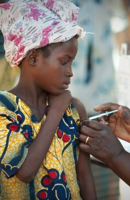
In the middle of 2003, Marc LaForce was having trouble sleeping. As the director of the Meningitis Vaccine Project (MVP), he was missing a vital piece of a difficult puzzle. The MVP sought to commercialize a vaccine that would help prevent Africa’s devastating epidemics of meningococcal meningitis, a bacterial infection of the brain and spinal cord. The largest documented outbreak, in 1996, sickened 250,000 people in Africa and caused 25,000 deaths. In 2002, a single West African country (Burkina Faso) had 13,000 meningitis cases and at least 1,500 deaths.
To succeed, the MVP needed a vaccine production method with two essential qualities: very effective and very affordable. But in mid-2003, that search hit a dead end. “All projects have their ups and downs,” says LaForce, M.D. “We were in the downest of downs.”
back to top 

This week, FDA issued final guidance on incorporating and integrating radio frequency wireless technology into medical devices, Bloomberg BNA reports.
In a blog post on Tuesday, FDA Senior Policy Adviser Bakul Patel wrote, “Our goal is to help industry develop a range of innovative, safe and effective medical devices that incorporate wireless technology, which can, in turn, help reduce health care costs, enhance quality and benefit patients and providers alike” (Weixel, Bloomberg BNA, 8/14).
back to top 

The new landscape for venture capital investing does not seem to leave much room for classic company formation. Investor after investor has shut down or moved beyond startups into what seem like greener pastures.
So it should come as no surprise that at least a few VC firms are now expanding into the royalty space, as shown by a deal announced this week. Aisling Capital and Clarus Ventures, two top-tier VC firms, acquired 20 percent of the royalty stream created by sales of ibrutinib, a novel tyrosine kinase inhibitor developed by Pharmacyclics (NASDAQ: PCYC) and partnered with Johnson & Johnson (NYSE: JNJ) for use in B-cell malignancies such as chronic lymphocytic leukemia (CLL).
back to top 

DreamIt Health Demo Day has gotten a lot of great press, from Philly.com to NewsWorks to Technical.ly Philly, and many more. These plaudits are well deserved: DreamIt Health was the first Philadelphia-based health care accelerator, and by all accounts it was a huge success. Ten health care startup companies participated in this venture, made possible by a collaboration between Independence Blue Cross (IBC), Penn Medicine, and DreamIt Ventures. The more than 300 attendees to the Demo Day on July 24, 2013 included potential investors and customers, mentors, and health care executives.
We at Wharton Entrepreneurship are delighted, and not only because this event was such a terrific demonstration of the robust community of heath care entrepreneurs in the Philly region. We’re proud to point out that the founders of four of the presenting companies and both of the speakers are all Wharton Entrepreneurship alumni, several of whom went through our Venture Initiation Program (VIP)! If that’s not a demonstration of Knowledge in Action, then I don’t know what is.
back to top 
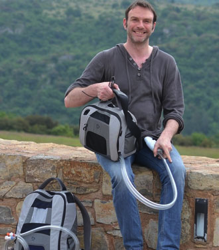
Due to the global shortage of donor hearts, patients on the waiting list for a heart transplant can wait several months to several years for a match to be found. But for 36-year-old Frédéric Thiollet, who surpassed two years of support with the SynCardia temporary Total Artificial Heart on Aug. 5, he’s enjoying each and every day.
“I feel well and I am confident, having been implanted now for over two years,” said Frédéric Thiollet. “I have recuperated all my physical functions, even my sexual activity, which I had believed was gone forever. In my own words, I have enjoyed an effective resurrection, a new birth. Physically I have no limit. I am as strong and powerful as before, even more so than before.”
back to top 

BioBoost, a consortium of OrbiMed Advisors LLC, Johnson and Johnson (NYSE: JNJ) and Takeda Pharmaceutical Co. Ltd. (TSE: 4502) has won the tender to establish the life sciences incubator as part of the Office of the Chief Scientist’s incubator program.
The franchise for the biotech tender, like the franchise for all incubators since the reform, is for eight years. The consortium members will receive NIS 6.9 million in financing over three years, more than franchisees of incubators in other fields, as part of the government’s wish to provide special support for the life sciences. Most of the incubator’s companies will develop drugs, and a few will develop medical devices.
back to top 

University of Maryland researchers announced last week they have been able to successfully turn a fish known for eating anything, the cobia, into a vegetarian.
While altering any animal’s diet may seem unnatural or even wrong, the biologists said the development could mean big bucks for the seafood industry.
“Aquaculture isn’t sustainable because it takes more fish to feed fish than are being produced,” said Aaron Watson, a graduate assistant at the university’s Center for Environmental Science. “But a new vegetarian diet might change everything.”
back to top 

XLerate Health, a Louisville-based accelerator for early-stage, health-related companies, has selected six companies to participate in its inaugural class. The accelerator’s 10-week intensive immersion program began Monday and runs until “Demo Day” on Oct. 25.
back to top 
|
|
|



|
In This Issue
|
|
About BHI
BioHealth Innovation (BHI) is a regionally-oriented, private-public partnership functioning as an innovation intermediary focused on commercializing market-relevant biohealth innovations and increasing access to early-stage funding in Maryland.
|
|
|
|

September 9-10
Boston Park Plaza Hotel & Towers

September 9-27

September 12
Novartis Institutes for Biomedical Research

September 18-19
South San Francisco near the Airport

October 11
Georgetown Conference Center
|
BioHealth Job Opportunities
|
Newsletter designed and distributed by:

|
|
|
 |
|
The information contained in this website and newsletters is for general information purposes only. The information is provided by BioHealth Innovation via its newsletters, but not written or endorsed in any way by BioHealth Innovation unless otherwise noted. While we endeavor to keep the information up to date and correct, we make no representations or warranties of any kind, express or implied, about the completeness, accuracy, reliability, suitability or availability with respect to the website or the information, products, services, or related graphics contained on the website for any purpose. Any reliance you place on such information is therefore strictly at your own risk.
|
|
|
|
|
|
|
 BHI CEO Rich Bendis recently served as an expert panelist contributing to a special report from the “White House Lab-to-Market Inter-Agency Summit.” Panelists examined the U.S. federal government’s investment in drug R&D and the resulting private sector commercialization. According to the Summit report: BHI CEO Rich Bendis recently served as an expert panelist contributing to a special report from the “White House Lab-to-Market Inter-Agency Summit.” Panelists examined the U.S. federal government’s investment in drug R&D and the resulting private sector commercialization. According to the Summit report:
Federal research has done exceedingly well at accomplishing its original intent, which is to increase human knowledge, meet mission needs, and undertake high-risk research of long-term importance to the U.S. economy that is beyond the reach of the private sector. But commercialization of resulting discoveries from agency research has largely been an after-thought, despite clear Congressional and Presidential intent expressed through a series of legislative mandates and Executive Orders. While research to meet agency missions is critical, the members of the Panel believe that if the U.S. is to remain globally competitive in the 21st century, it must accelerate the translation of federally-funded R&D into commercial outcomes that create economic and public value, thus maximizing the return on the public dollars invested.
Read more at:
Increasing the Impact of Federally-Funded R&D
back to top 
by Joseph P. Allen and Diane Palmintera
 On May 20, 2013, the White House Lab-To-Market Inter-Agency Summit was held in Washington, D.C. The Summit was organized by the White House Office of Science and Technology Policy and the National Institutes of Health’s Heart, Lung, and Blood Institute. The purpose of the meeting was extraordinary: asking national experts outside of the federal agency system to recommend ways to increase the return-on-investment for the $140 billion annual taxpayer expenditure on federally-funded research and development. On May 20, 2013, the White House Lab-To-Market Inter-Agency Summit was held in Washington, D.C. The Summit was organized by the White House Office of Science and Technology Policy and the National Institutes of Health’s Heart, Lung, and Blood Institute. The purpose of the meeting was extraordinary: asking national experts outside of the federal agency system to recommend ways to increase the return-on-investment for the $140 billion annual taxpayer expenditure on federally-funded research and development.
The format for the meeting also was unusual. Research agencies nominated 20 national experts experienced in various phases of technology commercialization to participate in the Summit. The Administration placed no preconditions or limitations on the expert Panel and asked it to focus on “transformative” ideas. We were privileged to be asked to serve as the Summit’s co-chairs.
The Administration requested that the Panel address several overarching questions:
- How can agencies better align themselves to more effectively promote the commercial development of their research;
- How can effective metrics for various stages of these efforts be developed; and
- How can we better leverage multi-agency resources to enhance the public’s return-on-investment through the commercialization of more federally-funded technologies?
back to top 

Topic: “EIRs, SBIRs, and more with BioHealth Innovation, Inc.”
Presenters:
- Richard Bendis, President and CEO
- Ethan Byler, Director, Innovation Programs
- Todd Chappell, Entrepreneur-in-Residence, NIH-OTT
- Dr. Ken Malone, Entrepreneur-in-Residence, UMD Ventures
- Ram Aiyar, Entrepreneur-in-Residence, NHLBI
BioHealth Innovation, Inc. (BHI) is a regional innovation intermediary that accelerates and facilitates technology transfer and commercialization of market-relevant research in federal labs, universities, and biohealth companies in the Region. It is a private-public partnership that connects the Region’s innovation assets to provide integrated technical knowledge, financial means, and entrepreneurial/managerial expertise to turn promise into prosperity for the region while advancing human health.
BHI’s Entrepreneur-in-Residence (EIR) program is designed to be an active partner with research institutions to source, fund, and grow high-potential, early-stage products through project-focused companies. The entrepreneurs in the program support the formation of new companies based upon innovative discoveries in the areas of drugs, vaccines, therapeutics, diagnostics, and medical devices from the intramural research programs at the NIH and Food and Drug Administration (FDA), as well as from universities and businesses.
BHI’s Commercial Relevance Program (CRP) offers biohealth companies support in preparing applications for federal funding inclusive of SBIRs, STTRs, and other federal government awards. Companies submit their federal funding concepts and receive pre-proposal feedback to help troubleshoot and strengthen your application. Further support from professional consultants and service providers is available to assist in improving your application.
BHI recently published the Central Maryland BioHealth Entrepreneur’s Resource and Finance Guide 2013. The Guide serves as a compendium of resources to biohealth innovators and entrepreneurs working to start and grow new companies and technologies in the region.
back to top 

The INNo program trains research scientists in the entrepreneurial skills needed to bring technology inventions and services to the healthcare market.
Participants in the INNo program learn to:
- Identify and evaluate the commercial potential of intellectual property
- Understand the business fundamentals related to technology start-ups
- Create a value proposition and business concept for a new product, platform, or service
- Articulate investment opportunities persuasively to potential investors and partners
- Develop a network of resources in the Maryland entrepreneurial community
back to top 
 The RESI conference is poised to be one of the more unique events in the life sciences space this coming fall. This full-day investor partnering conference is groundbreaking in that it is focused on redefining the investor landscape in early stage life sciences. As all of us in the industry are aware, the life science investor landscape has changed; venture capital has left a void and there is a plethora of new entities entering the space with capital to allocate. The RESI conference is poised to be one of the more unique events in the life sciences space this coming fall. This full-day investor partnering conference is groundbreaking in that it is focused on redefining the investor landscape in early stage life sciences. As all of us in the industry are aware, the life science investor landscape has changed; venture capital has left a void and there is a plethora of new entities entering the space with capital to allocate.
This conference has assembled these players – Senior decision-makers from some of the largest pharmaceutical & device companies, patient groups, philanthropic organizations, investment banks, and family offices will all be joining the action on September 16th. The conference will also have representation from next-generation technology transfer, licensing and funding experts, and there will be a free fund-raising boot camp. We urge all biotech and medtech readers to take a look at the program, and to take some time out to reeducate themselves regarding the new landscape unfolding in the life science investor arena.
Biohealth Innovation has been able to secure Earlybird pricing for our readership through August 30th via this link – We look forward to meeting you in September!
back to top 
 Kauffman Foundation FastTrac®, has joined with Montgomery College to support future and current business owners before, during, and after the startup process. Entrepreneurs will receive the information, resources, and networks necessary to start and grow successful businesses. Kauffman Foundation FastTrac®, has joined with Montgomery College to support future and current business owners before, during, and after the startup process. Entrepreneurs will receive the information, resources, and networks necessary to start and grow successful businesses.
Three courses will be offered:
- FastTrac NewVenture
- FastTrac GrowthVenture
- FastTrac TechVenture
For more information: Program Flyer
back to top 

University of Maryland (UM) Ventures announced today agreements between University of Maryland, Baltimore (UMB) and five different life sciences companies across the Baltimore/Washington metropolitan region. The companies include Montgomery County-based Rexahn Pharmaceuticals, Baltimore County-based Plasmonix, Prince Georges County-based IGI Technologies, Howard County-based A&G Pharmaceuticals, and Frederick County-based BioAssay Works. These deals are part of UM Ventures’ continual efforts to accelerate technology commercialization, advance industry collaboration, and support projects with commercial value at both the Baltimore and College Park campuses of the university.
“UMB is very excited to collaborate with these companies, each an innovator in its own right,” said Phil Robilotto, Assistant Vice President, Office of Technology Transfer, UMB. “These types of collaborations are at the core of our mission to channel the expertise of our industry partners and highlight our efforts to support the Maryland biotechnology community.”
back to top 

The following funding opportunity announcements from the NHLBI or other components of the National Institutes of Health, might be of interest:
NIH Guide Notice:
NOT-OD-13-095): Using ASSIST to Prepare and Submit Multi-Project Applications to NIH: Webinar – August 13, 2013
NIH will require electronic submission for all P01, P20, P50 and U19 applications intended for due dates on or after September 25, 2013.
NOT-OD-13-097: Extension of eRA Commons User IDs to Individuals in Graduate and Undergraduate Student Project Roles with Measurable Effort on an NIH Annual Progress Report (PHS2590 & RPPR)
Over the next year the NIH will start requiring an eRA Commons ID for all individuals in graduate and undergraduate student roles who participate in NIH-funded projects for at least one person month or more.
NOT-HL-13-187: Notice of Intent to Publish a Funding Opportunity Announcement for Low-Cost Pragmatic Patient-Centered Randomized Controlled Intervention Trials (UH2/UH3)
The NHLBI, along with other NIH Institutes and Centers, intends to promote a new initiative by publishing a Funding Opportunity Announcement (FOA) to solicit applications to plan and conduct low cost, pragmatic, randomized clinical trials that are integrated into existing clinical practice settings and/or leverage existing electronic patient care resources.
Program Announcement (PA):
PA-13-302: Research Project Grant (Parent R01) (expires September 8, 2016)
The Research Project Grant (R01) supports a discrete, specified, circumscribed project to be performed by the named investigator(s) in areas representing the specific interests and competencies of the investigator(s). The proposed project must be related to the programmatic interests of one or more of the participating NIH Institutes and Centers (ICs) based on descriptions of their programs.
PA-13-292: Behavioral and Social Science Research on Understanding and Reducing Health Disparities (R01) (expires September 8, 2016)
The purpose of this FOA is to encourage behavioral and social science research on the causes and solutions to health and disabilities disparities in the U. S. population.
back to top 

About one year ago GlaxoSmithKline (NYSE: GSK) set up a division to study the electrical impulses along the peripheral nervous system and develop technologies to read, change, or manipulate these impulses to treat acute and chronic diseases. Now it’s launched a $50 million venture capital fund to invest in companies with pioneering technology in this emerging field of bioelectronics, according to a company statement.
The Action Potential Venture Capital fund, which will be based in Cambridge, Massachusetts, takes its name from the electrical signals that pass along the nerves in the body. Problems with the patterns of these impulses are associated with a broad range of diseases.
back to top 

When PharmAthene Inc. merges with Seattle-based Theraclone Sciences Inc., it will become part of a company that has the kind of deal with Big Pharma any drug discovery firm would envy.
Theraclone has a multimillion dollar research and development deal with pharmaceutical giant Pfizer Inc. that could be worth as much as $632 million in license, royalty and other payments to the combined company. Theraclone and PharmAthene are entering into an all-stock merger of equals. The combined company will trade publicly.
back to top 

Leggett Joins O’Malley/Brown Administration in Announcing $630 Million Investment in County’s Transportation Network; Governor Also Announces Additional $400 Million for Construction of Purple Line for Montgomery and Prince George’s
Montgomery County Executive Ike Leggett today joined Governor Martin O’Malley and Lt. Governor Anthony Brown during their announcement that Montgomery County will be receiving $628 million in transportation investments and an additional $400 million for construction of the Purple Line that will benefit both Montgomery and Prince George’s counties. Brown also announced that the Purple Line will be built as a public-private partnership under HB 560, the law he championed to attract private investment for new infrastructure in Maryland.
back to top 

The Johns Hopkins University’s schools of medicine and public health received a $5.8 million federal government grant for research on frailty among older adults. The five-year grant will allow the university to continue research designed to identify the causes of frailty in older adults and speed the development of interventions to slow or stop it.
The grant renews funding of the Johns Hopkins Claude D. Pepper Older Americans Independence Center (OAIC ), a federally designated center of excellence that is one of only 14 such university sites nationwide supported by the National Institute on Aging (NIA ). The centers are named for a longtime Democratic member of Congress who championed support for older adults.
back to top 

The University of Maryland announced Monday that long-time finance professor Alexander J. Triantis has been appointed dean of the Robert H. Smith School of Business.
Triantis, 49, succeeds G. “Anand” Anandalingam, who left the post at the end of June to take a position in London as dean of the Imperial College Business School. Triantis will assume the position Sept. 1.
back to top 

Governor Martin O’Malley called attention to state investments in technology during a visit on July 31 to the University of Maryland BioPark, where he spent time in corporate laboratories with chief executive officers and their employees.
Jay A. Perman, MD, president of the University of Maryland, Baltimore (UMB), joined O’Malley on the tour and at a news conference, where the governor spoke about the importance of supporting the life sciences. O’Malley noted that the state has a plan to invest $1.3 billion in life sciences by 2020 and has increased tax incentives to encourage biotechnology and research and development.
back to top 

The University of Maryland University College announced Wednesday it will be the first in the state’s university system to create a path for students to earn academic credit for learning through “massive open online courses.”
The university is one of the nation’s largest public providers of online higher education with an enrollment of about 93,000 students.
back to top 

Digital health accelerator Healthbox and anchor partner Florida Blue had their priorities straight when they chose the seven companies for their inaugural Florida accelerator program: Address the high populations of seniors and youths in the state.
Companies that do that will have more opportunity to scale and build momentum, they reasoned.
back to top 

No factor defines success and failure for a drug company more than this: Companies that invent more, better drugs at a lower cost do better than those that hemorrhage cash but never get an important product to market. Yet 19 in 20 medicines in experimental development fail, meaning a great many companies fail too.
For years, researchers, including one team from Tufts University and another at Eli Lilly, have estimated the cost of inventing and developing a drug at $1 billion or more. These estimates try to exclude costs not directly related to a drug’s approval and also don’t allow for any comparisons between companies. Last year, for the first time, I did something far cruder: I took the 15-year research spending of a group of big pharmaceutical companies and divided it by the number of new drugs (technically new molecular entities, the Food and Drug Administration’s term for drug molecules that have not been approved in any form for any use previously).
back to top 

The Office of Translational Alliances and Coordination (OTAC) in the Division of Extramural Research Activities (DERA), NHLBI is seeking outstanding candidates for the Business Development Specialist (Health Scientist Administrator) position. The OTAC is charged with accelerating the translation of basic discoveries and innovations into new diagnostics, devices, and therapeutics, and facilitating the development of new technologies via Small Business Innovation Research (SBIR) initiatives. The Office facilitates identification of emerging areas of translational opportunities and provides functional integration by developing interdependent teams that leverage resources and intellect across the NHLBI, and with other NIH Institutes, agencies, and organizations. The OTAC enhances communication and coordination between existing programs, develops and coordinates strategic initiatives and Funding Opportunity Announcements (FOAs), and identifies and capitalizes on synergies to meet and enhance program goals. For more information about the OTAC, please visit http://www.nhlbi.nih.gov/about/dera/otac.
The Business Development Specialist will be responsible for the evaluation of the scientific and technological novelty, business opportunity potential and commercialization merits for research projects in the NHLBI SBIR/STTR portfolio as well as other initiatives in the OTAC. Responsibilities of the position include activities such as portfolio management assistance; drafting solicitations; evaluating the effectiveness of short and long-term SBIR projects, providing advice to the OTAC Director and NHLBI senior-level scientists regarding strategic SBIR technology development; establishing internal and external contacts to foster the development of programs and identification of opportunities for SBIR technology research support and collaboration; facilitating scientific collaborations between NHLBI, NIH, DHHS and other Federal agencies, industry and the private sector; and building public-private partnerships to ensure best practices and exchange information.
back to top 

Kleiner Perkins, the investor behind Google and Amazon, and Accel Partners, best known for its investment in Facebook, are putting $18 million into MyFitnessPal, a little-known digital-health startup that has helped its 40 million-plus users shed a collective 100 million pounds.
Despite those accomplishments, this is the first time MyFitnessPal has raised money from professional investors, which raises the question: Do venture capitalists have any idea what they’re doing in the networked fitness market?
back to top 

You may have a great idea for a new diagnostic, drug, or technology but developing, testing, and commercializing it takes money. One very viable source for a biotech start-ups in the US are SBIR and STTR Small Business Technology Development grants.
These federal grant programs provide essential funds for hundreds of entrepreneurs to get their technology out of the lab into the market. In fact, with awards totaling about $700 million per year, the SBIR/STTR program is one of the leading sources of seed funds for start-ups and small businesses developing new disease and health related technologies.
back to top 
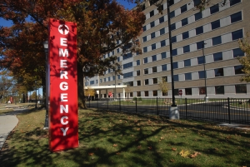
Some hospitals are turning to technology entrepreneurs to reduce readmission rates and avoid penalties imposed under the Affordable Care Act, the Wall Street Journal reports.
Background
Last year, an ACA provision went into effect that allows CMS to penalize hospitals for excess readmissions of Medicare patients.
The penalties are based on the number of heart failure, heart attack or pneumonia patients above the national average who are readmitted within 30 days to an acute-care hospital.
back to top 
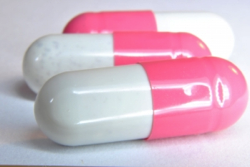
For most of us, the blister packs our medicines come in are just temporary barriers to be scratched open with our fingernails or popped open like Chiclets. We usually don’t even pay attention to the tiny, vaguely printed expiration dates tattooed on the silver skin of our aspirin or cough medicine’s packaging; we take for granted that it’s in date.
Yet around the world, billions of people can’t take the expiration dates of their medication for granted. Doing so can, and often is, fatal. A new concept could put an end to that by encapsulating our medicines in strips that change color as they expire, transforming the packaging of dangerously out-of-date medication into a chromatic warning. But will big pharma bring it to market?
back to top 

Money may not make the world go round, but it does keep companies innovating. The Small Business & Technology Development Center has made formal a longstanding relationship with BBCetc., an Ann Arbor-based development consulting company with a specialty in helping businesses secure federal grant funding for commercialization and growth.
The partnership will utilize BBCetc.’s extensive background in federal research grant proposals with the SBTDC’s statewide organization and presence to assist companies with writing proposals specifically for the Small Business Innovation Research and Small Business Technology Transfer federal research grants.
back to top 

Proof of Concept grants are intended to enhance the commercial viability of health-related technologies or concepts developed by non-profit organizations or enhance the competitiveness of early-stage companies for private equity investment. The maximum award is $250,000 in total costs.
Submission and review process:
- Three cycles of pre-proposal review, proposal review, and awards by the LSDF Board of Trustees through August 2014. Up to 32 pre-proposals will be reviewed per cycle.
- Pre-proposals are reviewed every four months and require a presentation and interview.
- Invited proposals are due one month after pre-proposal reviews and reviewed the following month. Proposal reviews require a presentation and interview.
- Awards are made one month after proposal reviews.
- If a pre-proposal results in an invitation to submit a proposal, that invitation is valid only for the proposal deadline immediately following the pre-proposal review.
back to top 

The University of Maryland College Park ranks among the best universities in the nation, but it appears the Terps are known to let their hair down.
College Park also ranks among the top 20 party schools in the country, according to the newly released rankings from the Princeton Review.
back to top 
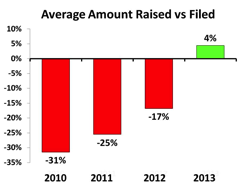
It isn’t just the volume of IPOs this summer that makes this window a victory for hibernating private biotechs and their VC backers, it’s the details of the offerings in terms of price, performance, and type of biotech making the leap onto the public stage. For the last five years we have not seen average offering prices land above expectations, but 2013 is breaking that trend. Price performance is also impressive, with a number of IPOs hovering near 2x the offering price. Rounding out these two positives for valuation is the return of the formerly taboo Phase I and Pre-Clinical IPOs – a qualitative signal of strength.
back to top 

GlaxoSmithKline’s new $50 million venture capital fund will be based out of the One Broadway building in Cambridge’s Kendall Square, inside an office of SR One, the drug giant’s corporate VC arm, a GSK spokesperson said.
The 16-floor One Broadway building also houses the Cambridge Innovation Center startup offices across a number of its floors, as well as venture capital firms Charles River Ventures and Highland Capital Partners.
back to top 

MedCity News writes about all kinds of startups whether their pitch is more at home on CNN or MIT’s Technology Review. We are always so focused on what’s coming next that we forget to reflect on all the companies we have recently discovered. To solve this, we’ve created a monthly report to make sure none of our readers missed any of these posts.
Our new Monthly Startups Index is a free (e-mail registration required) compendium of the early-stage activity across healthcare. It is a piece of business intelligence that includes MedCity’s deeper looks at select early-stage companies, chronicles the investment activity and other news, and even highlights which startups got the most attention from MedCity readers every month.
back to top 

Patients like it and so do health organizations, but electronic communications in clinical care will likely not be widely adopted by primary care physicians unless patient workloads are reduced or they are paid for the time they spend phoning and emailing patients, both during and after office hours.
Those are some key conclusions of an in-depth examination by investigators at Weill Cornell Medical College of six diverse medical practices that routinely use electronic communication for clinical purposes. The detailed report, the most comprehensive of its kind, appears in the August issue of the journal Health Affairs.
back to top 

A person who has suffered from a stroke or spinal-cord injury might need to use crutches or a wheelchair as they gradually regain lost motion through physical therapy.
But these patients could see drastically different effects strapping on a robotic bodysuit or a bionic limb and walking around like Iron Man as they heal. And such digital hardware has the potential to make them recover faster, as well.
back to top 
|
|
|



|
In This Issue
|
|
About BHI
BioHealth Innovation (BHI) is a regionally-oriented, private-public partnership functioning as an innovation intermediary focused on commercializing market-relevant biohealth innovations and increasing access to early-stage funding in Maryland.
|
|
|
|

August 14
William E. Hanna, Jr. Innovation Center

September 9-10
Boston Park Plaza Hotel & Towers

September 9-27

September 12
Novartis Institutes for Biomedical Research

September 18-19
South San Francisco near the Airport
|
BioHealth Job Opportunities
|
Newsletter designed and distributed by:

|
|
|
 |
|
The information contained in this website and newsletters is for general information purposes only. The information is provided by BioHealth Innovation via its newsletters, but not written or endorsed in any way by BioHealth Innovation unless otherwise noted. While we endeavor to keep the information up to date and correct, we make no representations or warranties of any kind, express or implied, about the completeness, accuracy, reliability, suitability or availability with respect to the website or the information, products, services, or related graphics contained on the website for any purpose. Any reliance you place on such information is therefore strictly at your own risk.
|
|
|
|
|
|
|

Emergent BioSolutions Inc. (NYSE: EBS) announced today that it has closed on its acquisition of Bracco Diagnostics Inc.’s Healthcare Protective Products Division. This acquisition, which includes the RSDL® (decontamination lotion) product that is cleared for marketing by the U.S. Food and Drug Administration (FDA) for removal or neutralization of chemical warfare agents from the skin, diversifies and broadens Emergent’s biodefense franchise into the chemical countermeasure market.
“As a result of this transaction closing, Emergent is focused on the uninterrupted supply of RSDL product to customers and on the seamless integration of the new Healthcare Protective Products Group (HPPG) into our biodefense division,” said Adam Havey, EVP and president of Emergent’s biodefense division. “This news, which comes on the heels of other positive developments in our biodefense division, including receiving BioThrax® (Anthrax Vaccine Adsorbed) market authorization in Germany as well as reporting positive data from our pivotal study supporting licensure of a post-exposure prophylaxis indication for BioThrax, reinforces Emergent’s leadership position in the biodefense arena.”
back to top 

Slices from thousands of brains fill nearly a dozen freezers set to 112 degrees below zero on the top floor of a research building at the Johns Hopkins Science + Technology Park.
Inside those slices might be the secrets to schizophrenia and other mental illnesses. On a recent morning, researchers with the Lieber Institute for Brain Development performed dissections of the amygdala, an almond-shaped mass of neurons thought to play a key role in such diseases.
back to top 

Kolltan Pharmaceuticals, a privately held biopharmaceutical company, today announced an agreement with MedImmune, the global biologics research and development arm of AstraZeneca, under which Kolltan will in-license a monoclonal antibody targeting the Her3 receptor tyrosine kinase from MedImmune. Based on the current program status, Kolltan anticipates initiating Phase 1 clinical testing of this product in the first quarter of 2014.
“This in-licensing opportunity exemplifies our leadership in and focus on receptor tyrosine kinases and their key role in oncology and other serious diseases,” commented Dr. Jerry McMahon, Kolltan’s President and Chief Executive Officer. “Kolltan will apply its extensive scientific expertise and R&D drug development experience to prepare for entry into the clinic, including a focus on patient selection strategies. Kolltan is excited to advance this innovative product candidate into clinical testing for the broad potential treatment of cancer patients where this target plays a role.”
back to top 

Maryland’s venture capital fund has announced that two tech companies in the state will get a total of $350,000.
Gov. Martin O’Malley made the announcement on Monday.
A Baltimore firm called SocialToaster has received approval for $200,000. The company specializes in social media and customer engagement.
back to top 
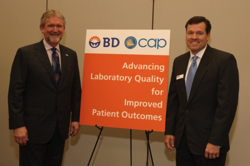
BD Diagnostics, a segment of BD (Becton, Dickinson and Company) (NYSE: BDX), a leading global medical technology company, and the College of American Pathologists (CAP), the world leader in laboratory quality assurance and improvement, today announced the launch of a new strategic alliance that will provide solutions to advance laboratory quality for improved patient outcomes in China and India. BD and CAP announced the collaboration during the American Association for Clinical Chemistry (AACC) Annual Meeting in Houston, Texas.
Laboratories play a critical role in the diagnosis and treatment of disease for the more than 2.5 billion people who live in China and India. The BD/CAP Strategic Alliance will improve access to external quality assurance/proficiency testing (PT) that can have a direct and positive impact on laboratory quality, and therefore, patient outcomes. Together BD and CAP will provide education to improve awareness of global practice standards and training that will help laboratories achieve their quality improvement goals. Additionally, BD will manage PT distribution, including sales, shipping, and first-line client service.
back to top 

Becton, Dickinson and Company is one of domain players of insulin syringes and other delivery devices, referring to the pie chart, Market Shares of the leading suppliers of Insulin Syringes and other delivery devices, 2009. Today, the market shares accounts 45% in the world, 80% in U.S. and Europe .
back to top 
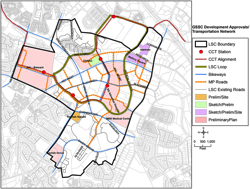
Research organizations in the Great Seneca Life Sciences Corridor are considering the creation of a common cyberinfrastructure that would facilitate sharing and spur innovative ideas.
Anil Srivastava, president of Open Health Systems Laboratory on Johns Hopkins University’s Montgomery County campus, proposed the idea and held a meeting Monday with physicians, university faculty and representatives from Cisco Systems, Montgomery County government, the National Institute of Standards and Technology, MedImmune and other organizations.
back to top 

The University of Maryland University College announced Wednesday it will be the first in the state’s university system to create a path for students to earn academic credit for learning through “massive open online courses.”
The university is one of the nation’s largest public providers of online higher education with an enrollment of about 93,000 students.
back to top 

The founders of District startup hub 1776 have shopped around the idea of raising a $25 million seed fund — modeled partially off of 500 Startups — that would place initial bets as high as $150,000 on early-stage tech companies, according to an investor presentation obtained by the Washington Business Journal.
1776 co-founder Evan Burfield cautioned that the document is a draft, and that 1776 is not actively raising capital yet for the planned seed fund and accelerator. He stressed that officials there haven’t arrived on a target for the size of the fund and that $25 million — and other figures in the document — are just one of several ideas they’ve contemplated.
back to top 
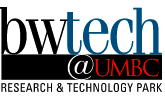
There’s a “No Vacancy” sign hanging out front University of Maryland, Baltimore County’s research and development park, and leaders say they have the state’s cyber security industry to thank.
University officials say the popularity of cyber security and growth in the number of young companies launching in that industry contributed to bwtech@UMBC’s popularity in recent years. The research and technology park is at capacity for the first time since it was established in 1989.
back to top 

Register now for the 3rd Annual Maryland Cyber Challenge
Live Finals! October 8 and 9, 2013 at the Baltimore Convention Center
- Three levels of team competition:
- high school (network defense)
- college, and professionals (capture the flag)
- Open to competitors across the United States, travel costs for finals are the team’s responsibility
- Lock in early for $50 discount team member names must be finalized by Monday, Sept. 9
- Competition schedule includes practice rounds, qualification rounds and a final cram session
- Team registration includes conference pass per team member and coach
back to top 

“Deidentified” data on individual participants in more than 200 GlaxoSmithKline-sponsored clinical trials are now available to independent researchers, company officials said.
And by the end of the year, the database is likely to include patient-level data from some 400 interventional trials, according to Perry Nisen, MD, PhD, and Frank Rockhold, PhD, of GSK’s research division in King of Prussia, Pa.
back to top 
Funding and Research Opportunities
The following funding opportunity announcements from the NHLBI or other components of the National Institutes of Health, might be of interest:
NIH Guide Notices:
Requests for Applications (RFA):
back to top 

The National Institutes of Health will fund up to $24 million per year for four years to establish six to eight investigator-initiated Big Data to Knowledge Centers of Excellence. The centers will improve the ability of the research community to use increasingly large and complex datasets through the development and distribution of innovative approaches, methods, software, and tools for data sharing, integration, analysis and management. The centers will also provide training for students and researchers to use and develop data science methods.
Biomedical research is increasingly data-intensive, with researchers routinely generating and using large, diverse datasets. Yet the ability to manage, integrate and analyze such data, and to locate and use data generated by others, is often limited due to a lack of tools, accessibility, and training. In response, NIH launched the Big Data to Knowledge (BD2K) initiative in December. This initiative supports research, implementation, and training in data science that will enable biomedical scientists to capitalize on the transformative opportunities that large datasets provide. The investigator-initiated BD2K Center of Excellence funding opportunity is the first of several BD2K funding opportunities to be announced in coming months.
back to top 

Funding and Research Opportunities
The following funding opportunity announcements from the NHLBI or other components of the National Institutes of Health, might be of interest:
NIH Guide Notices:
NOT-HL-13-183: Notice of Information: NHLBI Will Only Accept Resubmitted Applications for the Extended Expiration Date for PAR-10-234 Bioengineering Research Partnerships (BRP)(R01)
- The NHLBI will only accept resubmitted applications for the November 5, 2013 and January 7, 2014 (AIDS) standard due dates. Furthermore, all resubmission applications must come in on November 5, 2013 or January 7, 2014 (AIDS). NHLBI will not accept new, renewal or revision applications on November 5, 2013 and January 7, 2014.
NOT-OD-13-083: Extramural Loan Repayment Program for Pediatric Research (LRP-PR)
- The NIH invites qualified health professionals who contractually agree to engage in NIH mission-relevant research for at least two years, and who agree to engage in such research for at least 20 hours per week based on a 40-hour work week, to apply for participation in the extramural LRP.
NOT-OD-13-081: Extramural Loan Repayment Program for Clinical Researchers (LRP-CR)
- The NIH invites qualified health professionals who contractually agree to engage in NIH mission-relevant research for at least two years, and who agree to engage in such research for at least 20 hours per week based on a 40-hour work week, to apply for participation in the extramural LRP.
Request for Applications (RFA):
RFA-HL-14-001: Centers for Advanced Diagnostics and Experimental Therapeutics in Lung Diseases Stage II (CADET II)(UH2/UH3)
- The purpose of this Funding Opportunity Announcement (FOA) is to invite applications for Centers for Advanced Diagnostics and Experimental Therapeutics in Lung Diseases Stage II (CADET II). The goal of the CADET program is to accelerate the development of novel products for the treatment of lung diseases and sleep disordered breathing using strategies based on relevant pathobiologic processes.
back to top 

“All of us in the life sciences, medical device, and consumer industries are trying to get better at collaboration,” observed Robert Urban, PhD, head of the Johnson & Johnson (J&J) Innovation Center in Boston. For the Boston Innovation Center, which opened June 27, “getting better” includes enormous flexibility in the details of the early stage collaborative deals it inks with individual entrepreneurs, small companies and research institutions.
“A key focus is real adaptability. We strive to build collaborations that are unique to particular opportunities, based upon their specific needs. We have no preconceived notions regarding collaboration. Everything’s on the table,” Urban emphasized. Consequently, there’s no one typical deal or collaboration model. Instead, J&J’s team of business, scientific and transaction experts looks at each individual opportunity during their early stages to determine feasibility, fit within J&J’s goals and the best way to move forward.
back to top 

Rhode Island’s capital city should forget about becoming another Silicon Valley, venture capitalist Josh Kopelman said during a talk Tuesday at Betaspring, the business incubator in the Knowledge District.
It’s an unrealistic goal for Providence and the many other cities that aspire to become the nation’s next technology hub. But, said Kopelman, the founder and managing partner of First Round Capital, that doesn’t mean those communities can’t carve out their own niche in an industry that’s growing at a feverish pace.
back to top 

When Qiagen scooped up Ingenuity Systems this year, the acquisition of the Redwood City, California-based firm marked the first time the biotechnology giant had purchased a firm that exclusively makes software.
The purchase allows Qiagen to analyze information it derives from the genetic maps of organisms, which can be used to detect variations and mutations that point to the cause of certain diseases or new ways to treat them.
back to top 

Innovation is a hot topic in organizations today. And no wonder. Customers want new and different. Costs can’t be reduced any further. Business pressures abound. The economic picture is spotty. Competition is fierce.
Innovation to the rescue!
back to top 

A new class of medicines could give doctors the ability to awaken underperforming genes in patients who currently have no treatment options.
Boston-area startup RaNA Therapeutics is developing a novel kind of medicine that can boost the activity of genes that may be silenced or underactive and thus cause disease. The medicine would use a small RNA-like molecule that blocks the function of a long RNA molecule that is hampering the expression of such a gene.
back to top 
 The RESI conference is poised to be one of the more unique events in the life sciences space this coming fall. This full-day investor partnering conference is groundbreaking in that it is focused on redefining the investor landscape in early stage life sciences. As all of us in the industry are aware, the life science investor landscape has changed; venture capital has left a void and there is a plethora of new entities entering the space with capital to allocate. The RESI conference is poised to be one of the more unique events in the life sciences space this coming fall. This full-day investor partnering conference is groundbreaking in that it is focused on redefining the investor landscape in early stage life sciences. As all of us in the industry are aware, the life science investor landscape has changed; venture capital has left a void and there is a plethora of new entities entering the space with capital to allocate.
This conference has assembled these players – Senior decision-makers from some of the largest pharmaceutical & device companies, patient groups, philanthropic organizations, investment banks, and family offices will all be joining the action on September 16th. The conference will also have representation from next-generation technology transfer, licensing and funding experts, and there will be a free fund-raising boot camp. We urge all biotech and medtech readers to take a look at the program, and to take some time out to reeducate themselves regarding the new landscape unfolding in the life science investor arena.
Biohealth Innovation has been able to secure Earlybird pricing for our readership through August 30th via this link – We look forward to meeting you in September!
back to top 
|
|
|



|
In This Issue
|
|
About BHI
BioHealth Innovation (BHI) is a regionally-oriented, private-public partnership functioning as an innovation intermediary focused on commercializing market-relevant biohealth innovations and increasing access to early-stage funding in Maryland.
|
|
|
|

August 14
William E. Hanna, Jr. Innovation Center

September 9-10
Boston Park Plaza Hotel & Towers

September 9-27

September 12
Novartis Institutes for Biomedical Research

September 18-19
South San Francisco near the Airport
|
BioHealth Job Opportunities
|
Newsletter designed and distributed by:

|
|
|
 |
|
The information contained in this website and newsletters is for general information purposes only. The information is provided by BioHealth Innovation via its newsletters, but not written or endorsed in any way by BioHealth Innovation unless otherwise noted. While we endeavor to keep the information up to date and correct, we make no representations or warranties of any kind, express or implied, about the completeness, accuracy, reliability, suitability or availability with respect to the website or the information, products, services, or related graphics contained on the website for any purpose. Any reliance you place on such information is therefore strictly at your own risk.
|
|
|
|
|
|
|
BHI Also Announces Agreement With BD to Create Entrepreneur-in-Residence Position

Rick Ivey, BD Diagnostics
BioHealth Innovation, Inc. (BHI) today announced the fiscal year 2013-2014 election of officers and a new appointment to its Board of Directors. BHI also announced it has entered into an agreement with BD (Becton, Dickinson and Company) to establish an entrepreneur-in-residence (EIR) position at the National Institutes of Health (NIH) Office of Technology Transfer. In conjunction with this agreement, BD is entitled to a voting position on the BHI Board of Directors, which will be held by Richard M. “Rick” Ivey, Worldwide Vice President Research & Development, BD Diagnostics – Diagnostic Systems.
“I am pleased to welcome the new roster of officers and a new member to the BHI Board of Directors,” said Richard Bendis, BHI President and CEO. “The officers are a committed group of individuals who already have contributed to the steady growth of BHI, and will continue to be important leaders as the organization further develops.”
“Rick Ivey joins the Board on behalf of BD as part of the terms of an agreement between BHI and BD to establish an NIH EIR position,” added Mr. Bendis. “He represents an important new addition to our Board as he is a seasoned medical technology executive who can offer experience and insights to the growing cadre of start-up diagnostics companies in the State of Maryland.”
back to top 

The state of Maryland normally goes unnoticed in regards to the medtech and bioscience sectors when compared to California, Massachusetts and Minnesota. However, the state has the research facilities, governmental institutions and programs, corporate partnerships, funding and ambition to advance its biosciences marketplace into an international hub for medtech innovation.
At the heart of Maryland’s medical device and broader biotech industries is the state’s network of institutes and universities, which includes the National Institutes of Health, the National Institute of Standards & Technology, Johns Hopkins University and the University of Maryland. Each one of these entities boasts an array of specialized laboratories for the study of bioimaging, biomolecular modeling, drug delivery, biomaterials, MEMS, microfluidics and more.
back to top 

Montgomery County Executive Ike Leggett is leading a 2013 trade and Sister-City China Mission trip from Sept. 15 to Sept. 25, 2013. The Mission is organized by Montgomery County Government and Maryland China Business Council ( MCBC ) with the support of the State of Maryland ’s Maryland Center China ( MCC ) in Shanghai, which has been assisting local companies in China since 1996. This combination of experience and long term relationships offers a unique opportunity to explore, enter or expand in one of the world’s most dynamic and fast growing markets and destinations. Mission Statement:
Sister Cities create relationships based on cultural, educational and trade exchanges, creating lifelong friendships that provide prosperity and mutual benefits through “citizen diplomacy.”
Participants for trip include:
County Executive; State and County Government Representatives; Business, Education, Academic and Science Leaders; Chinese Community Leaders
back to top 

Topic: “EIRs, SBIRs, and more with BioHealth Innovation, Inc.”
Presenters:
- Richard Bendis, President and CEO
- Ethan Byler, Director, Innovation Programs
- Todd Chappell, Entrepreneur-in-Residence, NIH-OTT
- Dr. Ken Malone, Entrepreneur-in-Residence, UMD Ventures
- Ram Aiyar, Entrepreneur-in-Residence, NHLBI
BioHealth Innovation, Inc. (BHI) is a regional innovation intermediary that accelerates and facilitates technology transfer and commercialization of market-relevant research in federal labs, universities, and biohealth companies in the Region. It is a private-public partnership that connects the Region’s innovation assets to provide integrated technical knowledge, financial means, and entrepreneurial/managerial expertise to turn promise into prosperity for the region while advancing human health.
BHI’s Entrepreneur-in-Residence (EIR) program is designed to be an active partner with research institutions to source, fund, and grow high-potential, early-stage products through project-focused companies. The entrepreneurs in the program support the formation of new companies based upon innovative discoveries in the areas of drugs, vaccines, therapeutics, diagnostics, and medical devices from the intramural research programs at the NIH and Food and Drug Administration (FDA), as well as from universities and businesses.
BHI’s Commercial Relevance Program (CRP) offers biohealth companies support in preparing applications for federal funding inclusive of SBIRs, STTRs, and other federal government awards. Companies submit their federal funding concepts and receive pre-proposal feedback to help troubleshoot and strengthen your application. Further support from professional consultants and service providers is available to assist in improving your application.
BHI recently published the Central Maryland BioHealth Entrepreneur’s Resource and Finance Guide 2013. The Guide serves as a compendium of resources to biohealth innovators and entrepreneurs working to start and grow new companies and technologies in the region.
back to top 
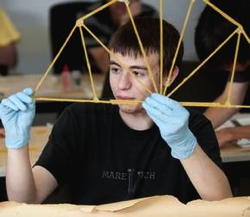
The bridges had to be strong and stable — and made of spaghetti.
Charged with this unusual engineering task, a group of about 40 high school students worked intently Thursday with the uncooked yellow strands to build a roughly half-meter structure they had designed to support more weight than their competitors’.
back to top 
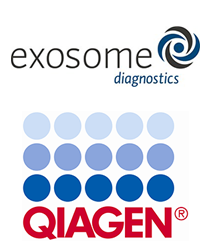
QIAGEN N.V. announced a partnership with Exosome Diagnostics Inc. to develop and commercialize high-performance sample preparation kits for the processing of nucleic acids from exosomes.
According to a release, combining the Exosome Diagnostics platform technology approach with select QIAGEN consumables and automation platforms has the potential to allow researchers, drug developers and doctors to take repeated, real-time genetic “snapshots” of disease from patients’ blood, urine or cerebrospinal fluid without the need for tissue biopsy. The companies are targeting initial product launches in the first half of 2014. Financial terms were not disclosed.
back to top 

The Daily Record is proud to announce its 2013 Most Admired CEO award winners.
The award recognizes men and women who have excelled professionally and in serving their communities.
The nominees were evaluated in terms of leadership and vision, competitiveness and service, community leadership and service, financial performance and growth and corporate leadership and board service.
back to top 

In 2012, Maryland ranked 5th in the number and total value of Small Business Innovation Research/Small Business Technology Transfer (SBIR/STTR) program awards, after California, Massachusetts, Virginia and New York. Maryland firms received 265 awards valued at $94 million. A DBED analysis of SBIR/STTR Phase I and Phase II data shows that the number and value of awards decreased nationally in the last four years, and Maryland followed this trend. Even so, when compared to other states, Maryland consistently ranked within the top five recipients of SBIR/STTR awards in both the number and the dollar value of awards received.
back to top 

Montgomery County’s Department of Economic Development is hoping to attract green businesses to the area with an incentive program that will reimburse investors as much as $25,000.
The Green Investor Incentive Program is now accepting applications from investors in businesses that provide green products or technologies. The program was approved in April by the County Council and County Executive Isiah Leggett appropriated $500,000 to fund the program.
back to top 
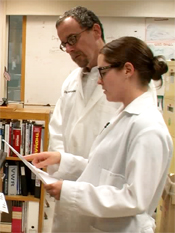
Regular marijuana use in adolescence, but not adulthood, may permanently impair brain function and cognition, and may increase the risk of developing serious psychiatric disorders such as schizophrenia, according to a recent preclinical study from the University of Maryland School of Medicine.
Researchers hope that the study, published in Neuropsychopharmacology — a publication of the journal Nature – will help to shed light on the potential long-term effects of marijuana use, particularly as lawmakers in Maryland and elsewhere contemplate legalizing the drug.
back to top 

Karen Vignare, Ph.D., an innovator in curriculum design and in the use of technology in learning, has been named associate provost and will lead University of Maryland University College’s new Center for Innovation in Learning. Vignare began her new post on June 3.
The Center for Innovation in Learning will be a laboratory for continuous improvements to the university’s curriculum, faculty development model and student support through its own work and through partnerships with high-profile organizations that will help further the work of the center.
back to top 

Washington, DC, is growing as a close-knit entrepreneur community where startups can find angel investors who will also act as mentors to grow a business, venture capitalists say.
The DC area has fewer venture capital firms than Silicon Valley, but steady startup investment is coming from tech industry veterans who have experience working with area universities, government agencies, and telecom companies including AOL, said John Taylor, head of research for the National Venture Capital Association (NVCA).
back to top 

What Is Baltimore Innovation Week?
Baltimore Innovation Week is a week-long celebration of technology and innovation in Baltimore. The annual week of events is intended to grow the impact of this innovative region through programming focused on technology, collaboration and improving Baltimore.
Last year, Baltimore Innovation Week 2012 had impact:
- More than 30 events from 25 partners with more than 1,500 attendees
- Startups and products launched, including NewsUp, Crowdstich and Easy WebContent’s Presenter.
- GBTC held Maryland’s first hackathon that featured representatives from city, state and federal government agencies.
- 15 projects launched as part of the latest Startup Weekend Baltimore, including winner TeamPassword.
- Venture for America unveiled plans to launch its fellowship program in Baltimore.
- TechBreakfast continued its growth as the region’s premiere startup demo event.
- Pitch Across Maryland brought Gov. O’Malley to Baltimore to show off his entrepreneurship-fueling work.
- The University of Maryland Biopark launched a new entrepreneurship demo series, starting with its incubated healthcare applications platform startup Analytics Informatics.
- Education Ignite welcomed more than 200 people to hear about the changing education climate in Baltimore.
back to top 

In the downtown of the nation’s capital, there is a magnificent building of steel and glass that is now home to what may be a remarkable tech experiment.
The D.C. Public Library took an 11,000-square-foot space and installed 80 computers, including 16 Macs. A 3D printer was added as well as a machine that can print and bind a book from a file in just minutes. There are tablets of all types — Android, Windows, Apple — and e-reading devices, available to try out. It opened last week.
back to top 

Independence Blue Cross (IBC), Penn Medicine, and DreamIt Ventures today host “Demo Day” for 10 health care startup companies selected to participate in DreamIt Health, the first-ever Philadelphia-based health care accelerator. The event will be held from 10 a.m. to 2 p.m. at World Café Live! at 3025 Walnut Street in Philadelphia. The participants will each have seven minutes to present their business plans to potential investors and customers, mentors, and health care executives. Demo Day events are ideal opportunities for startups to begin raising money to launch their businesses and gauge interest among key audiences.
“As health care undergoes dramatic change, I believe that the health care companies that thrive will be those with a clear vision that move rapidly and innovate. The caliber of this group of entrepreneurs and the diverse health care companies they represent is very promising and we’re pleased to have played a part in helping them plan, develop, and now present their ideas,” said Daniel J. Hilferty, president and CEO of IBC. “We are committed to transforming our region into a magnet for health care innovation, investment and employment, and supporting bright, new ideas like those we nurtured through DreamItHealth will help us get there faster.”
back to top 

Accelerators are all about discovering and mentoring talented entrepreneurs with good ideas for improving healthcare and other sectors. They make the right introductions to advisers, industry stakeholders and investors with the goal of improving the chances of their success. But when demo day ends, the team members are faced with the crucial question of how to sustain themselves as they advance the development of their companies. They need to figure out where their next sources of funding will come from.
back to top 

No, you didn’t fall off the list, your SBIR Insider has been silent since February 28, 2013. There is a lot of SBIR news to report but first I owe you an explanation of my absence.
Those of you who are “mature” enough to remember the ever garrulous Howard Cosell, may recall the Larry Holmes / Tex Cobb fight in 1982 that ended Cosell’s illustrious boxing commentary career. Because the fight was so one sided, potentially tragic, a public mutilation, and just plain ugly (with the referee refusing to stop the fight), Cosell became so incensed that he fell mute from the middle of the fight on, never to announce another bout.
back to top 
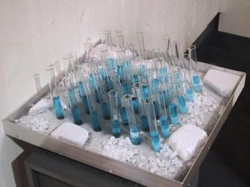
Three more biotechnology companies went public Thursday as startups continued to capitalize on strong demand for these offerings, a trend that’s giving life-sciences venture capitalists a much-needed lift.
Cellular Dynamics International Inc., Conatus Pharmaceuticals Inc. and Onconova Therapeutics Inc. debuted on Nasdaq Thursday. Their initial public offerings followed recent IPOs from venture-backed biotechs such as Agios Pharmaceuticals Inc., bluebird bio Inc., Esperion Therapeutics Inc., OncoMed Pharmaceuticals Inc. and Prosensa Holding BV.
back to top 

A new mobile health trends report released Wednesday underscores the mid- to low sophistication of current mHealth application technology but also emphasizes the explosive growth and integration headed for the market .
The Research and Markets mHealth trends report shows the industry poised for a compound annual growth rate of 61 percent by 2017, to reach a value of $26 billion. This revenue, researchers project, will be derived predominantly from mHealth hardware sales and services.
back to top 
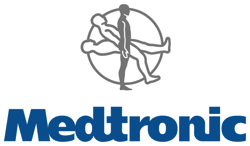
Medtronic has entered into an innovative partnership with The Johns Hopkins University, agreeing to provide $200,000 a year for up to three years and skilled mentoring to help biomedical engineering students design new healthcare solutions for underserved patients in developing countries.
The partnership was announced recently by Omar Ishrak, Medtronic’s chairman and chief executive officer, during his keynote address at the university’s annual Biomedical Engineering Design Day event. During his talk, Ishrak called attention to the need to improve access, outcomes, and the efficiency of healthcare solutions in developing regions of countries such as India, China, and Brazil.
back to top 

“Proper email is a balance between politeness and succinctness,” entrepreneur-investor-author Guy Kawasaki tells Entrepreneur.com. “Less than five sentences is often abrupt and rude, more than five sentences wastes time.”
In this way, the email is like poem. A sonnet maybe, with the way its limitations have a funny way of granting freedom. Or maybe an epic poem, given the fact that we all write a novel’s worth of email every year. But would a missive by any other length read just as sweet?
back to top 

Given poorly, criticism tends to lead to the criticized parties involved feeling like crap–and the criticizer looking like a jerk (or worse).
If you’re a psychologist, you’d call it reactance. If you’re a regular person, you’d call it a dick move.
back to top 
|
|
|



|
In This Issue
|
|
About BHI
BioHealth Innovation (BHI) is a regionally-oriented, private-public partnership functioning as an innovation intermediary focused on commercializing market-relevant biohealth innovations and increasing access to early-stage funding in Maryland.
|
|
|
|

August 14
William E. Hanna, Jr. Innovation Center

September 9-10
Boston Park Plaza Hotel & Towers

September 9-27

September 12
Novartis Institutes for Biomedical Research

September 18-19
South San Francisco near the Airport
|
BioHealth Job Opportunities
|
Newsletter designed and distributed by:

|
|
|
 |
|
The information contained in this website and newsletters is for general information purposes only. The information is provided by BioHealth Innovation via its newsletters, but not written or endorsed in any way by BioHealth Innovation unless otherwise noted. While we endeavor to keep the information up to date and correct, we make no representations or warranties of any kind, express or implied, about the completeness, accuracy, reliability, suitability or availability with respect to the website or the information, products, services, or related graphics contained on the website for any purpose. Any reliance you place on such information is therefore strictly at your own risk.
|
|
|
|
|
|
|

A Silver Spring company is looking to build the county’s first net zero facility, a building that would produce enough energy to sustain itself annually.
United Therapeutics —a biotechnology company that works on the development and commercialization of unique medical products — is expanding its campus with the new facility on the corner of Spring Street and Colesville Road in downtown Silver Spring. The building at 1000 Spring Street will have solar panels, a green roof and special placement of windows to allow for natural light and cross breezes to push hot air out of the facility, among other environmentally sustainable features, according to a presentation the design team gave to the Silver Spring Citizens Advisory Board on July 8.
back to top 

Rexahn Pharmaceuticals, Inc. (NYSE MKT: RNN), a clinical stage biopharmaceutical company, announced today that it has signed an exclusive license agreement with the University of Maryland, Baltimore (UMB) for a novel drug delivery platform, Nano-Polymer-Drug Conjugate Systems (NPDCS). This technology targets the delivery of currently marketed chemotherapeutic agents directly into cancerous tumors. The direct delivery of chemotherapeutic drugs into the tumors has been shown to result in increased efficacy and reduced toxicity.
The NPDCS platform combines existing chemotherapeutic agents with a proprietary polymer carrier that contains a signaling moiety which directs the drug into the tumor. This approach minimizes the levels of freely circulating anti-cancer agents in the body, which can dramatically reduce potential adverse events, and maximizes anti-tumor activity by accumulating in the cancer tumor. NPDCS is a broad platform that has the potential to generate multiple therapeutic candidates going forward.
back to top 

Emergent BioSolutions Inc. (NYSE:EBS) today announced the appointment of General George A. Joulwan (retired) to the company’s Board of Directors. General Joulwan has a highly distinguished military career that spans 36 years from 1961 to his retirement in 1997. Highlights of General Joulwan’s military service include: Serving as Supreme Allied Commander Europe (SACEUR); Commander in Chief, U.S. Southern Command; Commanding General, V Corps and Commanding General, 3rd Armored Division, United States Army Europe and U.S. Seventh Army, Germany. He has received numerous military decorations and foreign awards and decorations for his bravery and service, including two Silver Stars for valor.
Fuad El-Hibri, executive chairman of the board of Emergent BioSolutions, stated, “General Joulwan has devoted his four-decade career to serving the country, protecting our freedoms, and architecting peace around the world. He is a true and distinguished public servant, who is highly-respected in the global military community. As we expand our portfolio with specialized products that address the needs of U.S. and worldwide governments, his expertise and stature will be invaluable in guiding Emergent’s management team towards further growth.”
back to top 
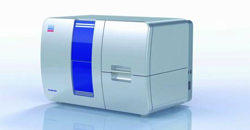
Overseas medical technology companies continue to stream into Greater Boston, lured by the area’s famous ecosystem of researchers, startups, and potential collaborators.
One company that flew in under the radar was Qiagen N.V., a Dutch holding company with corporate offices in Germany, which quietly acquired two privately held Massachusetts companies last year and may—or may not—be expanding its foothold in the Boston area.
back to top 

Montgomery Business Development Corporation is pleased to announce the launch of their new website montgomerybusiness.org.
The enhanced website includes business-friendly features, data resources and information to support existing and future business and development in our vibrant economy.
back to top 
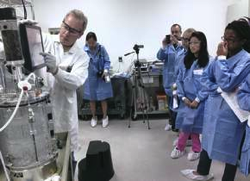
About 20 kids garbed in lab coats, booties and goggles entered a laboratory on Friday through a door marked with a bright-red “BIOHAZARD” sticker.
Filling the small room, they gathered around lab coordinator and microbiologist Cindy Reichelderfer, who held up several petri dishes in which scientists had tested for the presence of anthrax.
back to top 

Johns Hopkins researchers have coaxed stem cells into forming networks of new blood vessels in the laboratory, then successfully transplanted them into mice, a technique that could potentially be used to make blood vessels genetically matched to individual patients, the investigators say.
Their research results appear online this week in the Proceedings of the National Academy of Sciences.
back to top 

The Maryland Industrial Partnerships (MIPS) program, an initiative of the Maryland Technology Enterprise Institute (Mtech) in the A. James Clark School of Engineering at the University of Maryland, has awarded $3.8 million to 17 teams combining Maryland companies with university researchers to bring technology products closer to market, program officials announce today.
MIPS, a technology acceleration program, grants money matched with company funds to faculty engaged in each project.
back to top 

The Maryland Technology Development Corp. (Tedco) has invested $1.1 million in 14 state startups.
The grants were made through the organization’s Technology Commercialization Fund. The money will be put toward advancing the each company’s technology and product commercialization efforts.
back to top 

Johns Hopkins Hospital has reclaimed the top position on U.S. News & World Report’s 2013-2014 list of best hospitals.
The return to No. 1 comes a year after Massachusetts General Hospital edged out Hopkins for the top spot on last year’s honor roll list. Hopkins had been No. 1 since 1991.
back to top 

Venture capitalists invested $318 million in young Maryland companies from April through June, an increase of 115 percent from the first quarter, according to a report released Friday by PricewaterhouseCoopers.
About half of that financing, or $150 million, went to Precision for Medicine Inc., a Chevy Chase company that provides services for medical drug discovery, the report said. That was the highest amount any business in the country raised in the quarter and was matched only by a New York e-commerce website.
back to top 

The D.C. region raised $418 million in venture funding in April, May and June, according PricewaterhouseCoopers’ MoneyTree report, more than twice the total of second quarter 2012.
The “DC/Metroplex,” as defined by PWC, includes far-flung areas of Virginia and Maryland, not just the District and its suburbs. With the strong second quarter haul, the region has raised nearly as much in the first half of 2013 ($704 million) as it did all of last year ($735 million). For comparison, companies in the area raised $203 million in Q2 2012, and $286 million in the first three months of 2013.
back to top 

NCATS Research & Development Day will provide the unique opportunity to showcase the projects and technologies that have been incubating in a variety of NCATS drug development programs, including Therapeutics for Rare and Neglected Diseases (TRND) and Bridging Interventional Development Gaps (BrIDGs), to an audience of biopharmaceutical companies, venture capital, angel investors, foundations, and others. The object is to connect our collaborators with strategic partners that will provide financial and technical support to bring potential novel therapeutics to patients. The event will be held:
Thursday, September 12, 2013
Novartis Institutes for Biomedical Research
Cambridge, Massachusetts
back to top 

When: Wednesday July 24, 2013 from 4:30 PM to 7:00 PM EDT
Where: Growlers 227 E Diamond Ave Gaithersburg, MD 20877
Join us for a co-hosted BioBuzz and Women In Bio event with our sponsor, Social & Scientific Systems, Inc., along with many others from the local biotech industry at another exciting BioBuzz event on July 24th from 4:30 – 7:00 p.m. in Gaithersburg. Due to an overwhelming positive response to the location, we’re continuing to holding the event this month at Growlers in Old Towne Gaithersburg. We’re excited to see all of you soon, so please register today!
back to top 

The following funding opportunity announcements from the NHLBI or other components of the National Institutes of Health, might be of interest:
NIH Guide Notice:
NOT-OD-13-087: Notice of Change to Page Limits and Application Due Date in RFA-OD-13-008 Limited Competition: Restoring Research Resources Lost Due to Hurricane Sandy (R24)
- The purpose of this Notice is to revise the page limits for the Research Strategy section and to extend the due date of RFA-OD-13-008.
NOT-DK-13-012: Notice to Include AIDS Application Due Dates for PA-12-179 Exploratory/Developmental Clinical Research Grants in Obesity (R21)
NOT-HL-13-184: Correction of Key Dates for PAR-13-009 Secondary Dataset Analyses in Heart, Lung, and Blood Diseases and Sleep Disorders (R21)
- Key dates for PAR-13-009 “Secondary Dataset Analyses in Heart, Lung, and Blood Diseases and Sleep Disorders (R21) have been revised.
Requests for Applications (RFAs):
RFA-HL-14-010: Developing a Point-of-Care Device for the Diagnosis of Sickle Cell Disease in Low Resource Settings SBIR (R43/ R44)
- This announcement encourages applications that propose to develop a point of care device for the diagnosis of sickle cell disease (SCD) in infants and young children in low-income and low-resource settings. The aim of this program is to provide rapid diagnosis of SCD to children such that appropriate therapy can be given to reduce the risk of future complications.
back to top 

Monday, August 19, 2013 – Wednesday, August 21, 2013
Time: 7:00 a.m. – 5:00 p.m.
Location:
Natcher Conference Center
45 Center Drive
Bethesda, MD 20892
Sponsored by:
Blood Diseases Program
Division of Blood Diseases and Resources
National Heart, Lung, and Blood Institute
National Institutes of Health
Department of Health and Human Services
back to top 

National Cancer Institute scientists have released the largest-ever database of cancer-related genetic variations, providing researchers the most comprehensive way so far to figure out how to target treatments for the disease.
Open access worldwide to the new database, based on genome studies, is expected to help researchers accelerate development of new drugs and better match patients with therapies, NCI said in a statement on Monday.
back to top 

We often hear public leaders say “our diversity is our strength,” which has become somewhat a cliché over the years. While I don’t doubt their sincerity in believing what they say, I wonder how many truly understand what it means to have a large, diverse, and global population in their communities.
This past weekend, I attended the Chinese Biopharmaceutical Association’s (CBA) 18th annual conference, which attracted scientists, educators, businesses and entrepreneurs from the region as well as delegations from several cities in China. It was a high-energy conference hosted by an all-volunteer crew of local community members.
back to top 

If there’s one thing everyone in healthcare can probably agree on right now, it’s that there is an awful lot of data being generated each and every day. What to do with that data, however, is another question.
As Ted Driscoll, digital health director at venture capital firm Claremont Creek Ventures, sees it, the explosion of data is a definite boon for personalized medicine. Indeed, he said recently, “Medicine is becoming synonymous with big data – the data sets are just huge, now – but we had to wait for the IT revolution to happen and mature” in order to begin to put that data to use.
back to top 

The year is only half over, but one of the biggest biotech stories of 2013 is going to be the resurgence of the biotech IPO market. It’s a good news/bad news story, depending on where you stand, and how far you look out into the future.
First, the good. The IPO surge is a vote of confidence in biotech from generalist investors who have spent years ignoring the industry. It’s good news for biotech entrepreneurs and venture capitalists who back them. A lot of money will get pumped into researching and developing drugs for diseases that have been long neglected, like Duchenne Muscular Dystrophy. Regional innovation clusters will get a boost. Many small companies will have more negotiating leverage when they talk to Big Pharma companies about acquisitions. It might spur more much-needed venture investment in biotech startups.
back to top 

Biotechnology companies can access financial and management resources through venture capitalist (VC) firms. An analysis of 1,490 VC investments shows that country-of-origin (CO) of biotech companies has an effect on the participation by VC firms in various biotech subsectors. Specifically, it is found that US biotech companies tend to have higher amount received per VC firm, greater number of VC firms investing in them and greater biotech investment experience of the investing VC firms. Asia-Pacific biotech companies have consistently less VC firms investing in them and these investing VC firms tend to have less biotech investment experience. VC firms with greater biotech investment experience are also investing in European biotech companies more than those from the Americas less US. CO also correlates with outcomes in the four of the six key biotech subsectors studied. These findings suggest a strong CO effect of VC investment in biotech companies.
back to top 

“We are a team of guerrilla fundraisers who have launched a global campaign to fund research into a potential treatment for the cancer that killed Steve Jobs. The potential therapy, a cancer-busting virus, is currently sitting in a freezer in Sweden – but it can’t be tested for lack of just £2million” was iCancer’s pitch on Indiegogo, a crowdfunding portal. The company brought in more than $160,000 from this campaign.
Microryza is another crowdfunding platform exclusively for scientific research projects, available only to PhDs and professors who can attempt to raise money through this private channel instead of applying for grants. “This solution helps close the gap for potential and promising, but unfunded projects,” Bill Gates says about Microryza. With Kickstartr’s popularity, there has been an explosion of growth in crowdfunding portals, both general as well as ones targeting a specific niche.
back to top 

When it comes to lending to tech startups, Silicon Valley Bank has an impressive grip on the market. The Santa Clara, Calif.-based institution has been in the D.C. area 15 years and claims half of the region’s venture-backed companies as its clients. The bank, which has $21.5 billion in assets, has grown its Tysons Corner team by 25 percent in the past year to 10 people. I caught up with Megan Scheffel, who manages the bank’s Mid-Atlantic and Southeastern U.S. regions.
back to top 

Here’s another reason the dysfunctional federal budget process is bad for Americans: besides hurting the economy and hitting us in the pocketbook, partisan feuding over budget cuts could undermine our health and even shorten our lives.
That’s because House Majority Leader Eric Cantor and others in Congress have been using the budget process to target research in the behavioral and social sciences for elimination, even though they’re indispensable to understanding and improving Americans’ health.
back to top 
|
|
|



|
In This Issue
|
|
About BHI
BioHealth Innovation (BHI) is a regionally-oriented, private-public partnership functioning as an innovation intermediary focused on commercializing market-relevant biohealth innovations and increasing access to early-stage funding in Maryland.
|
|
|
|
|
BioHealth Job Opportunities
|
Newsletter designed and distributed by:

|
|
|
 |
|
The information contained in this website and newsletters is for general information purposes only. The information is provided by BioHealth Innovation via its newsletters, but not written or endorsed in any way by BioHealth Innovation unless otherwise noted. While we endeavor to keep the information up to date and correct, we make no representations or warranties of any kind, express or implied, about the completeness, accuracy, reliability, suitability or availability with respect to the website or the information, products, services, or related graphics contained on the website for any purpose. Any reliance you place on such information is therefore strictly at your own risk.
|
|
|
|
|
|
|

A total of 150 investors are vying for Maryland’s biotechnology tax credit this year, compared with 125 applicants last year.
Maryland’s Biotechnology Investment Incentive Tax Credit program gives tax credits to individuals and companies that invest in Maryland-based biotechnology startups. The program will give out $10 million in tax credits for fiscal 2014.
back to top 
 Kauffman Foundation FastTrac®, has joined with Montgomery College to support future and current business owners before, during, and after the startup process. Entrepreneurs will receive the information, resources, and networks necessary to start and grow successful businesses. Kauffman Foundation FastTrac®, has joined with Montgomery College to support future and current business owners before, during, and after the startup process. Entrepreneurs will receive the information, resources, and networks necessary to start and grow successful businesses.
Three courses will be offered:
- FastTrac NewVenture
- FastTrac GrowthVenture
- FastTrac TechVenture
For more information: Program Flyer
back to top 

University of Maryland (UM) Ventures announced today a collaboration between Frank Robb, Ph.D., at the Institute of Marine and Environmental Technology, and Department of Microbiology & Immunology at the University of Maryland School of Medicine, and Rockville, Maryland-based Fina Biosolutions LLC to devise new ways to manufacture a key component used in many vaccines. The international nonprofit organization, PATH, which spurs new innovation with the goal of delivering high-impact, low-cost global health solutions such as lifesaving vaccines, will fund the partnership’s development efforts as part of its pneumococcal vaccine project.
“A new and improved vaccine production method is the goal of this public-private partnership between my lab and Fina Biosolutions,” said Dr. Robb. “It is designed to yield broader availability of an important vaccine component, which is highly effective, but prohibitively expensive for some applications, particularly in the developing world.”
back to top 

Bethesda tops a list of The Most Educated Places in America
Personal finance site NerdWallet Inc. ranked cities based on high school drop out rates and the percentage of the population with associate degrees, bachelor’s degrees, master’s degrees and professional or doctoral degrees.
back to top 

QIAGEN N.V. (NASDAQ: QGEN; Frankfurt Prime Standard: QIA) today announced it has received approval by the U.S. Food and Drug Administration (FDA) to market the therascreen EGFR test as a companion diagnostic to guide the use of Boehringer Ingelheim’s new targeted therapy, GILOTRIFTM (afatinib), for treatment of metastatic NSCLC in patients whose tumors have certain EGFR gene mutations. More than 200,000 new lung cancer cases are diagnosed every year in the United States, with NSCLC accounting for approximately 85% of cases, leading to an estimated 160,000 deaths.
The therascreen EGFR test enables doctors to identify EGFR mutation-positive patients eligible for treatment with GILOTRIFTM (afatinib). The FDA approval of the therascreen EGFR test marks a further milestone in the global expansion of QIAGEN’s Personalized Healthcare franchise – and adds a third FDA-approved or cleared diagnostic kit to run on QIAGEN’s efficient Rotor-Gene Q MDx. Approximately 120,000 metastatic NSCLC patients each year in the U.S. could benefit from testing for EGFR mutations, a total potential testing market of about $35 million, according to QIAGEN estimates.
back to top 

The Partnering Agreements with United Therapeutics 2005-2013 report provides an in-depth insight into the partnering interests and activites of one of the worlds leading biopharma companies.
This report provides all the information you require to better understand United Therapeutics and its partnering interests and activities over the past seven years.
On demand company reports are prepared upon purchase to ensure inclusion of the most up to date deal and company data.
back to top 

Topic: “EIRs, SBIRs, and more with BioHealth Innovation, Inc.”
Presenters:
- Richard Bendis, President and CEO
- Ethan Byler, Director, Innovation Programs
- Todd Chappell, Entrepreneur-in-Residence, NIH-OTT
- Dr. Ken Malone, Entrepreneur-in-Residence, UMD Ventures
- Ram Aiyar, Entrepreneur-in-Residence, NHLBI
BioHealth Innovation, Inc. (BHI) is a regional innovation intermediary that accelerates and facilitates technology transfer and commercialization of market-relevant research in federal labs, universities, and biohealth companies in the Region. It is a private-public partnership that connects the Region’s innovation assets to provide integrated technical knowledge, financial means, and entrepreneurial/managerial expertise to turn promise into prosperity for the region while advancing human health.
BHI’s Entrepreneur-in-Residence (EIR) program is designed to be an active partner with research institutions to source, fund, and grow high-potential, early-stage products through project-focused companies. The entrepreneurs in the program support the formation of new companies based upon innovative discoveries in the areas of drugs, vaccines, therapeutics, diagnostics, and medical devices from the intramural research programs at the NIH and Food and Drug Administration (FDA), as well as from universities and businesses.
BHI’s Commercial Relevance Program (CRP) offers biohealth companies support in preparing applications for federal funding inclusive of SBIRs, STTRs, and other federal government awards. Companies submit their federal funding concepts and receive pre-proposal feedback to help troubleshoot and strengthen your application. Further support from professional consultants and service providers is available to assist in improving your application.
BHI recently published the Central Maryland BioHealth Entrepreneur’s Resource and Finance Guide 2013. The Guide serves as a compendium of resources to biohealth innovators and entrepreneurs working to start and grow new companies and technologies in the region.
back to top 

Lower overall costs of occupancy — coupled with academic resources and an educated work force — have made clusters outside the nation’s largest metro areas more attractive to multinational pharmaceutical companies focusing on right-sizing and R&D productivity. In the Midwest, Chicago remains an emerging cluster, while Minneapolis is holding steady as a top-10 cluster for the second year in a row. JLL’s second annual life sciences cluster report ranks top-10 cities for life sciences companies in 2013.
back to top 

The head of the nation’s medical research agency and leaders of Johns Hopkins hospital and medical school warned Monday that progress in fighting diseases could be slowed, jobs lost and scientists driven overseas unless across-the-board federal funding cuts are reversed.
Dr. Francis Collins, director of the National Institutes of Health, joined Sen. Barbara A. Mikulski, Hopkins executives and a stroke survivor at Hopkins’ Children’s Center to appeal for restoration of $1.5 billion in NIH funding cuts as part of the budget “sequester” approved last winter by Congress.
back to top 

Renee M. Winsky of Davidsonville has been named president and CEO of Leadership Maryland, a statewide leadership development program.
She replaces Nancy Minieri, who founded the organization in 1992. Minieri announced in March that she will retire at the end of this year.
Winsky is a 2005 graduate of Leadership Maryland. In the yearlong program, participants learn about problems and opportunities facing the state. More than 900 people have taken the course, including elected officials, business executives, educators and nonprofit directors.
back to top 

Innovation is a vague word and is too overused today, in the words of Bryan Sivak.
That was kind of a bold statement to make at a conference focused on, well, innovation.
In his keynote address at CONVERGE, the chief technology officer for the U.S. Department of Health and Human Services said the department’s philosophy is that innovation happens as a direct result of the freedom to experiment, a much more descriptive and meaningful phrase.
back to top 

At the funding panel discussion Wednesday at CONVERGE, a serial entrepreneur asked about crowdfunding.
First we got the stock answer of “don’t see how it’s possible for healthcare companies.” Then the conversation turned to cap tables.
Elliott Menschik of Dreamit Ventures said that having 50-60 people on a cap table is becoming normal.
back to top 

Microryza.com (not the catchiest of names) is a crowdfunding platform for research that raises money over the Internet from individuals who are willing to donate small amounts to fund a specific project. The average donation according to Microryza is $92.
In return for a 5 percent cut of funds raised and a 3 percent credit card processing fee, Microryza provides researchers access to a website where they can solicit money from the public to fund their research. Crowdfunding is typically an all-or-nothing deal, where donors only have to pay their pledged support if the project is fully funded within a defined period of time.
back to top 

CMS has proposed a policy change that would expand payments for telehealth services under the Medicare Physician Fee Schedule for 2014, Modern Physician reports.
Details of the Proposal
The proposed change would affect locations identified as rural “health professional shortage areas.”
back to top 

Indiana University scientists have transformed mouse embryonic stem cells into key structures of the inner ear. The discovery provides new insights into the sensory organ’s developmental process and sets the stage for laboratory models of disease, drug discovery and potential treatments for hearing loss and balance disorders.
A research team led by Eri Hashino, Ph.D., Ruth C. Holton Professor of Otolaryngology at Indiana University School of Medicine, reported that by using a three-dimensional cell culture method, they were able to coax stem cells to develop into inner-ear sensory epithelia — containing hair cells, supporting cells and neurons — that detect sound, head movements and gravity. The research was reportedly online Wednesday in the journal Nature.
back to top 

This week, Healthbox launched a new accelerator program in partnership with BlueCross BlueShield in Nashville, Tennessee. Other Healthbox locations include Chicago, Boston, London and most recently, Jacksonville, Florida. Healthbox typically partners with the local Blue health plan in each of its locations.
Nashville, home to 31 hospitals and more than 250 healthcare companies is “the Silicon Valley of healthcare,” according to Healthbox Founder and CEO Nina Nashif. In 2011, Nashville’s venture capital community invested $104 million in healthcare services and HIT startups. The accelerator also partnered with the Nashville Healthcare Council, an initiative of the Nashville Area Chamber of Commerce to establish Nashville’s position as the nation’s healthcare industry capital. According to the Nashville Healthcare Council, in 2008, one in eight Nashville workers were employed by a healthcare provider.
back to top 

The biotech IPO window is officially open.
Eleven second-quarter biotech initial public offerings totaling $1 billion — the strongest quarterly biotech market for venture-backed IPOs since third-quarter 2000 — fueled an overall surge in IPOs, according to the National Venture Capital Association and news and data company Thomson Reuters.
back to top 

Even as the White House has backed off on a few of its deadlines for administering the Affordable Care Act, the Obama Administration is staying the course on its efforts to transition paper files to electronic health records in doctor’s offices.
President Barack Obama met with several chief executives of health-care technology companies, government leaders and nonprofit public-service organizations on Monday for a conversation on how technology, big data and innovation can be used to bring down the costs and improve the quality of health care in the U.S., according to a statement from the White House.
back to top 
|
|
|



|
In This Issue
|
|
About BHI
BioHealth Innovation (BHI) is a regionally-oriented, private-public partnership functioning as an innovation intermediary focused on commercializing market-relevant biohealth innovations and increasing access to early-stage funding in Maryland.
|
|
|
|
Wednesday, August 14, 2013, 03:30pm – 05:00pm
|
BioHealth Job Opportunities
|
Newsletter designed and distributed by:

|
|
|
 |
|
The information contained in this website and newsletters is for general information purposes only. The information is provided by BioHealth Innovation via its newsletters, but not written or endorsed in any way by BioHealth Innovation unless otherwise noted. While we endeavor to keep the information up to date and correct, we make no representations or warranties of any kind, express or implied, about the completeness, accuracy, reliability, suitability or availability with respect to the website or the information, products, services, or related graphics contained on the website for any purpose. Any reliance you place on such information is therefore strictly at your own risk.
|
|
|
|
|
|
|

BioHealth Innovation, Inc., (BHI) a non-profit organization which strives to facilitate the development of commercially viable health IT products and companies by connecting market relevant research assets to appropriate funding, management and markets, is seeking interns as part of the BHI Internship Program.
POSITION DESCRIPTION – BHI Intern
BioHealth Innovation, Inc. (BHI), a regional private-public partnership focusing on commercializing market-relevant biohealth innovations and increasing access to early-stage funding in Central Maryland, is seeking highly motivated and dynamic individuals to fill internship positions at the Rockville, MD headquarters. The BHI Internship Program offers essential experience for IT, Business, and Biohealth students in the region. By offering a variety of projects and responsibilities to students, BHI aims to prepare interns for professional careers in the business, life sciences, healthcare and IT industries.
back to top 

Montgomery County’s top biotechnology firms will open their doors and their state-of-the-art laboratories next week to local middle school students interested in the life sciences. In a partnership with MdBio Foundation, Inc., and Montgomery College, preeminent local scientists and executives from MedImmune, Qiagen and Emergent BioSolutions will share their expertise and career stories with students from the Young Science Explorers Program (YSEP), a weeklong science workshop for rising seventh and eighth grade students.
Dressed in lab coats and safety glasses, students will get once in a lifetime exposure to local companies and scientists on the leading edge of medical breakthroughs. Topics will range from microbiology and vaccine research to lab safety and potential career paths for science students.
back to top 

Registration for the fall semester of Technology Transfer Classes at the FAES Graduate School at NIH is now open. For the semester beginning on September 9th there will be 12 courses offered in the technology transfer program:
· TECH 506 – Research Commercialization Webinar Course: The Essentials
· TECH 513A Introduction to Technology Transfer — Issues and Processes (given by the Technology Transfer Society)
· TECH 521 – Tools for Technology Transfer
· TECH 565 – Biomedical Business Development for Scientists
· TECH 567 – International Strategic Partnering and Business Development
· TECH 579 – Introduction to Negotiation
· TECH 575 – Business Finance & Accounting Principles for Scientists
· TECH 583 – Patent Research for Non-Legal Practioners
· TECH 587 – Strategic Consulting for Tech Companies
· TECH 607 – Capstone Course in Technology Transfer
· PHAR 328 – FDA Perspective on Drug Development
· PHAR 500 – Principles of Clinical Pharmacology
More details can be found in the new 2013 course catalog (www.faes.org) with enrollment open to the general community. All classes are part of the “Advanced Studies in Technology Transfer” certificate program and can be fully transferred as a block into various MBA & MS degree programs at the University of Maryland University College (UMUC) Graduate School.
There will also be an open house for the FAES Graduate School on Tuesday, August 20th from 4-7pm at the new FAES Classroom & Bookstore complex in Building 10.
back to top 

The INNo program trains research scientists in the entrepreneurial skills needed to bring technology inventions and services to the healthcare market.
Participants in the INNo program learn to:
- Identify and evaluate the commercial potential of intellectual property
- Understand the business fundamentals related to technology start-ups
- Create a value proposition and business concept for a new product, platform, or service
- Articulate investment opportunities persuasively to potential investors and partners
- Develop a network of resources in the Maryland entrepreneurial community
back to top 

Science Applications International Corporation (SAIC) SAI +0.46% , Maryland’s Department of Business and Economic Development (DBED), and the University of Maryland, Baltimore County (UMBC) announced the third annual 2013 statewide cyber competition, the Maryland Cyber Challenge(TM), will be held October 8 through October 9 at the Baltimore Convention Center in Baltimore, Maryland. Registration is now open for aspiring cyber warriors from around the nation to compete at the Maryland event, located in the growing epicenter for the cybersecurity industry.
The Maryland Cyber Challenge(TM) is designed to attract more students and young professionals to pursue careers in cybersecurity and is held in conjunction with the CyberMaryland2013 Conference and Cyber Hall of Fame. It is the premier statewide cyber competition showcasing today’s students and tomorrow’s technologists with three levels of competition: high school, college and professional. Teams will have the opportunity to develop and improve their cybersecurity skills in a real-world environment. Founders of the event include SAIC, UMBC, DBED, the National Cyber Security Alliance (NCSA), and the Tech Council of Maryland (TCM).
back to top 
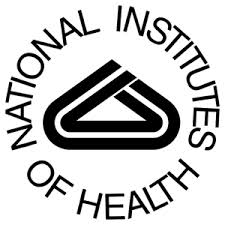
Due to the many changes that will result from the SBIR/STTR Reauthorization Act, NIH has set up a new website to keep the small business research community informed.
Applicants and grantees interested in the SBIR program can visit the website as well as the SBIR listserv and Twitter feed for news as the implementation plan rolls out.
back to top 
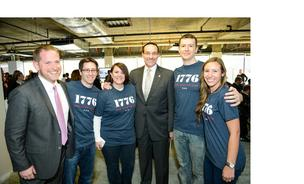
1776, the D.C. startup hub that launched earlier this year with District funding, plans to pull together a seed fund that will allow it to make equity investments in early-stage tech companies.
The creation of a fund would turn 1776 into a bona fide “accelerator.” The 1133 15th St. NW space, run by Startup DC’s Evan Burfield and Donna Harris, is now primarily a co-working operation (some say incubator), with additional programs layered on top of it, like the recently announced Challenge Cup international startup tournament.
back to top 
I t’s good to have friends in high places. Especially friends who can leverage more than 30 years of experience in technology and business to nurture and foster your startup seed. t’s good to have friends in high places. Especially friends who can leverage more than 30 years of experience in technology and business to nurture and foster your startup seed.
1776, a new startup incubator based in Washington, D.C., just announced a brand-new partnership with Microsoft, in which leaders from the company will collaborate with startups to guide them from a technical and business standpoint.
“[Microsoft] will help startups to leverage platforms upon which they can build innovative apps with the ability to scale rapidly and efficiently,” says 1776 co-founder Donna Harris. “Through 1776, they’re also providing mentorships for architects who can ensure that startups are maximizing the potential of these tools and platforms.”
back to top 

As investments in life science companies have dipped over the past few years, some investors have scaled back investments or walked away from the sector all together. But based on a tally by investment research firm PitchBook in its 2013 Venture Capital Healthcare Report, several firms have made 10 or more investments in pharmaceutical, medical device or health IT companies in the last year and a half.
back to top 

Creating a new medical device is not an inexpensive exercise. There are development costs, clinical trial expenses, and the lengthy process of getting a piece of new equipment approved by the Food and Drug Administration.
Those hurdles are a leading reason why most medical innovations come out of universities or established research firms.
back to top 

Funding for digital health startups is continuing to grow at a steady pace, but is beginning to stabilize.
Health accelerator Rock Health’s midyear report, released today, found that digital health funding for the first half of 2013 represents 11 percent growth in investment and 24 percent growth in deals year over year. In short, it’s still growing, but not as fast as in previous years.
back to top 

It’s been a slow year for startup fundraising—the investments doled out by venture firms in the first quarter dropped 6 percent compared with the same period of 2012. But at least a couple of sectors have been defying that trend. One is software, where funding for the first half of 2012 was up 38 percent over 2012 levels, and another is digital health, up 12 percent.
In a report issued yesterday (slides embedded below), San Francisco-based digital health accelerator Rock Health delved into the details behind that 12 percent number.
back to top 

When health IT startups say they’re making a new technology platform for physicians, John Sung Kim has an immediate follow-up question – for what specialty?
That’s a question he learned was critical as he began building and trying to sell the platform developed by his first health startup, DoctorBase. It’s been a series of hits and misses, which Kim isn’t afraid to talk candidly about. In a recent interview, he explained to MedCity News one of the most surprising things he learned when he set out to build a mobile platform that would let doctors, administrators and patients communicate without having to pick up the phone.
back to top 

Five years ago I built a biotechnology innovation index and I have been using it since tracking global biotechnology innovation in Scientific American’s Worldview. It has been a very rewarding project, and I have enjoyed the opportunity to present my research data at international conferences, business schools, and even National Defense University.
Now, Worldview’s editor Mike May has compared my innovation scores with the Venture Capital and Private Equity Country Attractiveness (VCPECA) index. I was quite pleased to see a relatively strong correlation between my innovation index and the VCPECA index.
back to top 

We knew that biotech companies were lighting up the stock market this year. Today, the National Venture Capital Association has fresh numbers illustrating Wall Street’s love affair with life sciences entrepreneurs—and the corresponding cold shower awaiting their counterparts in the tech sector.
The new report, comparing venture-backed IPOs with merger-and-acquisition deals, shows life sciences companies accounting for 13 of the 21 public stock listings in the second quarter.
back to top 

Revolution Ventures, the early-stage venture capital arm of Steve Case’s Revolution LLC, has filed paperwork with the Securities and Exchange Commission for a planned $150 million fund. Named in the SEC filing are Case and managing partners Tige Savage and David Golden. Revolution Ventures II LP, as it’s named in the filing, follows the formation in 2011of Revolution Growth, which invests in more mature, later-stage companies. Revolution Growth, led by Case, Donn Davis and Ted Leonsis, is operated separately from the venture unit.
back to top 
|
|
|



|
In This Issue
|
|
About BHI
BioHealth Innovation (BHI) is a regionally-oriented, private-public partnership functioning as an innovation intermediary focused on commercializing market-relevant biohealth innovations and increasing access to early-stage funding in Maryland.
|
|
|
|

July 10
William E. Hanna, Jr. Innovation Center

July 10
University of Maryland BioPark, Life Sciences Conference Center
|
BioHealth Job Opportunities
|
Newsletter designed and distributed by:

|
|
|
 |
|
The information contained in this website and newsletters is for general information purposes only. The information is provided by BioHealth Innovation via its newsletters, but not written or endorsed in any way by BioHealth Innovation unless otherwise noted. While we endeavor to keep the information up to date and correct, we make no representations or warranties of any kind, express or implied, about the completeness, accuracy, reliability, suitability or availability with respect to the website or the information, products, services, or related graphics contained on the website for any purpose. Any reliance you place on such information is therefore strictly at your own risk.
|
|
|
|
|
|
|

BioHealth Innovation, Inc., (BHI) a non-profit organization which strives to facilitate the development of commercially viable health IT products and companies by connecting market relevant research assets to appropriate funding, management and markets, is seeking interns as part of the BHI Internship Program.
POSITION DESCRIPTION – BHI Intern
BioHealth Innovation, Inc. (BHI), a regional private-public partnership focusing on commercializing market-relevant biohealth innovations and increasing access to early-stage funding in Central Maryland, is seeking highly motivated and dynamic individuals to fill internship positions at the Rockville, MD headquarters. The BHI Internship Program offers essential experience for IT, Business, and Biohealth students in the region. By offering a variety of projects and responsibilities to students, BHI aims to prepare interns for professional careers in the business, life sciences, healthcare and IT industries.
back to top 

The INNo program trains research scientists in the entrepreneurial skills needed to bring technology inventions and services to the healthcare market.
Participants in the INNo program learn to:
- Identify and evaluate the commercial potential of intellectual property
- Understand the business fundamentals related to technology start-ups
- Create a value proposition and business concept for a new product, platform, or service
- Articulate investment opportunities persuasively to potential investors and partners
- Develop a network of resources in the Maryland entrepreneurial community
back to top 

Gaithersburg’s largest private employer will add some 110 new jobs to its local and Frederick offices and seeks to take its revenues to unprecedented heights by 2020, a official told the Gaithersburg mayor and City Council Monday.
MedImmune’s Gaithersburg headquarters currently house 2,300 employees, approximately 66 percent of the company’s international jobs, MedImmune Executive Vice President of Operations Andy Skibo said, including the addition of 830 jobs over the past five years.
“Virtually all of MedImmune is practically here in Gaithersburg or just up the road in Frederick,” Skibo said, but the biotech company continues to expand.
back to top 

Johns Hopkins Montgomery County has received the 2013 Visionary Award from the Montgomery County Chamber of Commerce.
Before an audience of hundreds at the Chamber’s Annual Awards Dinner, Campus Executive Elaine Amir thanked the Chamber for the recognition, thanked Montgomery County for having the foresight to establish the campus in 1985 and applauded County Executive Ike Leggett for his encouragement and support.
back to top 

The University of Maryland has named Brian Darmody associate vice president for corporate and foundation relations. In this newly-created role, Darmody is charged with leading essential university-wide efforts to develop strategic partnerships between the University of Maryland and the corporate and foundation community.
“Throughout Brian’s 30-year career with the university, he has proven to be the perfect candidate to lead this new charge,” says UMD Vice President for University Relations Peter Weiler. “His unparalleled ability to develop and nurture mutually beneficial relationships for the university has been integral over the years, and we look forward to the leadership he will bring to this new role.”
back to top 

The following funding opportunity announcements from the NHLBI or other components of the National Institutes of Health, might be of interest:
NIH Guide Notice:
NOT-EB-13-002: Notice To Extend PAR-10-234 Bioengineering Research Partnerships (BRP) (R01)
The purpose of this notice is to extend PAR-10-234 “Bioengineering Research Partnerships (BRP) (R01),” which supports partnerships for basic, applied, and translational multi-disciplinary research that addresses important biological, clinical or biomedical research problems. The new expiration date is January 8, 2014.
NOT-RM-13-022: Notice of Intent to Publish a Funding Opportunity Announcement for the NIH Health Care Systems Research Collaboratory – Demonstration Projects for Pragmatic Clinical Trials Focusing on Multiple Chronic Conditions (UH2/UH3)
The National Institutes of Health, Office of Strategic Coordination intends to promote a new initiative by publishing a Funding Opportunity Announcement (FOA) to solicit applications for Demonstration Projects for Pragmatic Clinical Trials focusing on the management of multiple chronic conditions, to be conducted as part of the NIH Health Care Systems Research Collaboratory.
Requests for Applications (RFAs):
RFA-CA-13-008: Person-Centered Outcomes Research Resource (U2C)
The purpose of this Funding Opportunity Announcement (FOA) is to support the creation of a research resource infrastructure for the administration of research investigations using person-centered health outcomes, further referred to as the Person-Centered Outcomes Research Resource (PCORR).
RFA-OD-13-010: Tobacco Control Regulatory Research (R21)
The purpose of this FOA is to encourage biomedical, behavioral, and social science research that will inform the development and evaluation of regulations on tobacco product manufacturing, distribution, and marketing.
RFA-OD-13-011: Tobacco Control Regulatory Research (R01)
The purpose of this FOA is to encourage biomedical, behavioral, and social science research that will inform the development and evaluation of regulations on tobacco product manufacturing, distribution, and marketing.
RFA-OD-13-012: Tobacco Control Regulatory Research (R03)
The purpose of this FOA is to encourage biomedical, behavioral, and social science research that will inform the development and evaluation of regulations on tobacco product manufacturing, distribution, and marketing.
back to top 

Governor Martin O’Malley announced today that the State, through the BioMaryland Center, has awarded nearly $1 million to five innovative life sciences companies through its Biotechnology Development Awards program. The companies, which received up to $200,000 each, will use the funding to advance the early detection of Alzheimer’s disease, create a less-invasive treatment for tachycardia patients, enhance animal analgesics, control traumatic bleeds and develop high-quality gluten and allergen-free kosher food products.
“These companies are developing products that are changing the way we feed, fuel and heal our planet and have the potential to impact millions of patients around the world,” said Governor O’Malley. “These awards are critical to ensuring that the life-saving research being done here in Maryland has the opportunity to move to the commercial marketplace.”
back to top 

Health and Human Services (HHS) Deputy Secretary Bill Corr announced today that the Department is seeking innovators and entrepreneurs to apply for the HHSentrepreneurs Program. Launched last year, HHSentrepreneurs connects private sector innovators and entrepreneurs with teams of federal employees working on projects that address some of the biggest challenges in health, health care and human services.
The first individuals hired last October through HHSentrepreneurs are working on critical projects including the Affordable Care Act, health resilience technology, and the nation’s organ transplant system.
“By bringing the best in the public and private sectors together, HHSentrepreneurs is creating an environment in HHS that fosters innovative solutions to new and old challenges,” Deputy Secretary Corr said.
back to top 

Research universities and start-up companies receive funds to further develop technologies in the fields of therapeutic, software, medical, mobile and online technologies
The Maryland Innovation Initiative (MII), which accelerates commercialization and technology transfer from university labs to start-up companies, announced it has awarded $2,960,466 to 29 research projects. Funds were awarded to nine start-up companies and 20 university projects – three of these projects include a partnership between two universities working together on technology development. Awards were given across a variety of industries, including therapeutic, software, medical, mobile and online technologies. MII is administered by the Maryland Technology Development Corporation (TEDCO).
“Maryland has some of the best research universities in the nation and an incredible entrepreneurial spirit, which is evident in the awards granted through the Maryland Innovation Initiative,” said Dominick Murray, Secretary of the Maryland Department of Business and Economic Development. “With a progressive approach to university research and technology development, Maryland is well positioned to build on our history of discovery, innovation and invention.”
back to top 

Sources inform “Globes” that AstraZeneca plc (NYSE; LSE; OMX: AZN) has teamed with Israeli real estate company Minrav Holdings Ltd. (TASE: MNRV) to bid in the Office of the Chief Scientist’s biotechnology incubator tender. AstraZeneca will handle the consortium’s professional side, and Minrav will be responsible for financing.
The AstraZeneca-Minrav consortium is bidding against a consortium of OrbiMed Israel and the venture capital arms of Johnson & Johnson (NYSE: JNJ) and Japan’s Takeda Pharmaceuticals Co. Ltd. (TSE: 4502).
back to top 

New Enterprise Associates has increased its focus on companies developing drugs for rare disease, an effort that’s paying off. Portfolio company Prosensa Holding BV, which it backed last year, has just gone public on Nasdaq. The company develops therapies for rare conditions such as Duchenne muscular dystrophy, myotonic dystrophy and Huntington’s disease.
back to top 

UMBC recently earned accolades in three college ranking reports.
The Online College Database recognized the high salaries of UMBC graduates in its list of most affordable colleges. The website used data from the ”2012-2013 PayScale College Salary Report” to rank UMBC as having the second-highest post-graduation starting salary of colleges in Maryland with annual tuition under $20,000. According to the report, the average starting salary of a UMBC graduate is $50,300.
back to top 

Taking the helm of EFPIA, Viehbacher says R&D and innovation are the keys to rescuing Europe from its economic slump, but more harmonization across the pharmaceutical sector will be needed too.
back to top 

Baltimore City’s Emerging Technology Centers (ETC) is pleased to announce that two of its client companies were recently honored at the 13th Annual 2013 Maryland Incubator Company of the Year (ICOY) Awards. Curiosityville was chosen “Best Education Technology Company” and ADASHI was chosen “Best New Incubator Company” by the judging panel of venture capitalists, government officials and business leaders.
“The Curiosityville team is thrilled to have been selected for this award,” said Susan Magsamen, CEO of Curiosityville. “Part of the credit must go to our affiliation with the ETC their assistance has helped allow us to focus on building the business.”
back to top 

“Research for research’s sake” is not a refrain you’ll hear from Johns Hopkins Whiting School of Engineering Dean Nicholas Jones.
Universities have been working on increasing the amount of their research being used for commercially available products and services, but in Maryland the process has been somewhat slow. While Hopkins is the most highly funded university by the National Institutes of Health, it lags behind its peers in terms of patents, new companies and other measures of commercialization.
back to top 

This Funding Opportunity Announcement (FOA) invites Small Business Innovation Research (SBIR) grant applications from small business concerns (SBCs) that propose to implement investigator-initiated clinical trials related to the research mission of the NIAID. This program will utilize the cooperative agreement mechanism (U44) to enable support for hypothesis-driven, milestone-driven clinical trials. Although clinical trials not considered high-risk may be proposed, this program encourages high-risk clinical studies. High-risk does not imply human subject or patient risk, but rather defines a study that contains one or more of the following unique features: involves non-routine interventions, administration of an unlicensed product, or administration of a licensed product for an unapproved indication. Mechanistic studies are also encouraged and can be proposed under this program. However, not more than one clinical trial should be proposed within each grant application. The NIAID has a robust infrastructure for conducting clinical studies that includes independently managed resources provided through grants and contracts, as well as resources that are integrated within existing NIAID-supported clinical trial networks. Proposed clinical trials may use NIAIDs independent infrastructure for clinical studies, however, support will not be provided for studies that propose to use dedicated resources that are part of a NIAID-supported clinical trial network. A Commercialization Plan must be included that details plans for promoting further commercialization of the intervention/product/technology to be derived from or associated with the proposed clinical trial, including plans for promoting and establishing partnerships between the SBIR Phase II awardee and third-party investors and/or strategic partners.
back to top 

Startup Maryland (www.startupmd.org), an initiative of the UpGlobal consortium (www.up.co), today announced that UNDER ARMOUR® Founder and CEO Kevin Plank will participate as the first instructor for Raise Your Game™.
Raise Your Game is Startup Maryland’s bootcamp initiative developed to provide the entrepreneurial community with a structured educational program and to help startup CEOs and founders understand and employ the building blocks of strong startups and startup communities. The new twist for this bootcamp is that the sessions will be proctored/taught by experienced (often serial) entrepreneurs who are very well-recognized and respected.
back to top 

Ernst & Young unveiled its Entrepreneur of the Year Maryland winners on Wednesday night to a packed ballroom at the Marriott Waterfront Hotel in Baltimore, with honors going to former Advertising.com CEO Scott Ferber, the entire Kelly clan and longtime Living Classrooms head James Piper Bond.
A total of 10 awards were given out during a black-tie affair. The awards program recognizes high-growth entrepreneurs who demonstrate excellence and success in such areas as innovation, financial performance and personal commitment to their businesses and communities. The finalists and winners were selected by a panel of independent judges.
back to top 

MyBodyCount® (MBC), a health and wellness platform that enables individuals to track their lifestyle-based health risk, today introduced the first-ever clinical health score available to the public. The MBC Health Score was developed using actuarial science working in conjunction with Dr. Hunter Young, Assistant Professor of Medicine and Epidemiology at The Johns Hopkins University School of Medicine (JHUSOM) and Dr. Dhananjay Vaidya, Associate Professor of Medicine at JHUSOM.
The score is based on a panel of biomarkers, referred to as the BodyCount8™, that are predictors of the risk of health events and conditions related to heart, kidney and lung diseases and diabetes. The biomarkers can be affected by modifying behaviors including: eating, exercising, smoking and medication adherence. The score enables consumers to understand their lifestyle-based risk relative to their age group and gender.
back to top 

A new report on sea level rise recommends that the State of Maryland should plan for a rise in sea level of as much as 2 feet by 2050. Led by the University of Maryland Center for Environmental Science, the report was prepared by a panel of scientific experts in response to Governor Martin O’Malley’s Executive Order on Climate Change and “Coast Smart” Construction. The projections are based on an assessment of the latest climate change science and federal guidelines.
“The State of Maryland is committed to taking the necessary actions to adapt to the rising sea and guard against the impacts of extreme storms,” said Governor Martin O’Malley. “In doing so, we must stay abreast of the latest climate science to ensure that we have a sound understanding of our vulnerability and are making informed decisions about how best to protect our land, infrastructure, and most importantly, the citizens of Maryland.”
back to top 

Venture capital-backed initial public offerings more than doubled during the second quarter from the previous quarter and rose 90% from a year earlier, with 21 companies raising a combined $2.2 billion during their stock-market debuts, driven by the highest number of biotech venture-backed IPOs in nearly 13 years, according to Thomson Reuters Corp. (TRI, TRI.T) and the National Venture Capital Association.
During the quarter, 13 of the offerings were in the life-sciences sector, representing 62% of the total. Biotech offerings, at 11 deals, marked the highest level since the third quarter of 2000, when 13 companies went public.
back to top 

The venture capital industry is getting rightsized, with less capital raised and deployed, smaller funds, fewer active venture capital firms, and more regulation. The exit climate has picked up, but is still not at the level required. And valuations are overall more rational, with some exceptions at the later stages or in consumer-facing momentum companies.
However, with the confluence of not one but four big market drivers (discussed below), and the rise of a new technology cycle, we think this is still a great time to be a venture capitalist or entrepreneur.
back to top 
I ntegrated BioTherapeutics (IBT) and Stanford University have been jointly awarded a $300,000 Small Business Technology Transfer (STTR) grant from the National Institute of Allergy and Infectious Diseases of the National Institutes of Health. The goal of the grant is to develop a highly effective immunotherapeutic to prevent Hepatitis C Virus (HCV) reinfection in liver transplant patients based on antibodies that limit the ability of the virus to escape treatment via mutations. ntegrated BioTherapeutics (IBT) and Stanford University have been jointly awarded a $300,000 Small Business Technology Transfer (STTR) grant from the National Institute of Allergy and Infectious Diseases of the National Institutes of Health. The goal of the grant is to develop a highly effective immunotherapeutic to prevent Hepatitis C Virus (HCV) reinfection in liver transplant patients based on antibodies that limit the ability of the virus to escape treatment via mutations.
Up to 170 million people worldwide are chronically infected with HCV, putting infected individuals at significant risk for cirrhosis, liver failure, and liver cancer. Chronic infection is poorly controlled by current antiviral treatments though there is new optimism with two recent FDA-approved direct acting antivirals, telaprevir and boceprevir. These drugs, however, are not recommended in the transplant setting due to likely adverse drug-drug interactions.
back to top 

A commercialization program to match up provider, payer and pharma technology needs with willing and able healthcare startups has announced its 10 finalists. Each will receive $100,000 tied to meeting certain performance milestones. They have three to six months to work with the healthcare group they’re matched with, depending on the complexity of the program.
PILOT Health Tech NYC, developed by the New York City Economic Development Corporation and Health 2.0, is holding its demo day today at Blueprint Health’s NYC digs. The program is also supported by StartUp Health.
back to top 
|
|
|



|
In This Issue
|
|
About BHI
BioHealth Innovation (BHI) is a regionally-oriented, private-public partnership functioning as an innovation intermediary focused on commercializing market-relevant biohealth innovations and increasing access to early-stage funding in Maryland.
|
|
|
|
|
BioHealth Job Opportunities
|
Newsletter designed and distributed by:

|
|
|
 |
|
The information contained in this website and newsletters is for general information purposes only. The information is provided by BioHealth Innovation via its newsletters, but not written or endorsed in any way by BioHealth Innovation unless otherwise noted. While we endeavor to keep the information up to date and correct, we make no representations or warranties of any kind, express or implied, about the completeness, accuracy, reliability, suitability or availability with respect to the website or the information, products, services, or related graphics contained on the website for any purpose. Any reliance you place on such information is therefore strictly at your own risk.
|
|
|
|
| | | | | | | | | |